Sustainability Features of Iran’s Vernacular Architecture: A Comparative Study between the Architecture of Hot–Arid and Hot–Arid–Windy Regions
Abstract
:1. Introduction
2. Literature Review
3. Methodology and Materials
- (1)
- Comprehensive literature review on Iran’s vernacular architecture, concentrating on hot-arid regions (considering the large body of research available, there was no need for direct field studies).
- (2)
- A series of field studies and documentations among thirty-two sample houses across Sistan supported with interviews with native masons. Sample houses were chosen based on the ratio of each district’s number of villages to all the villages in the Sistan region (Table 1). These houses were chosen from the oldest and most intact buildings in each district and then documented by authors, using direct measurements to draft plans, elevations and sections (Figure 2).
- (3)
- Study of climate, geography and geology in the two different regions’ contexts.
- (4)
- Investigation of differences between two regions’ architectures caused by different contexts.
- (5)
- Concluding the sustainable adaptations that vernacular architecture has undergone in order to accommodate to two contexts. (Connection and order of these sections are depicted in Figure 3.)
4. Defining Features of Two Regions’ Contexts
4.1. Yazd’s Context
4.1.1. Yazd’s Geographical Features
4.1.2. Yazd’s Geological Features
4.1.3. Yazd’s Climatic Features
4.2. Sistan’s Context
4.2.1. Sistan’s Geographical Features
4.2.2. Sistan’s Geological Features
4.2.3. Sistan’s Climatic Features
5. Comparison of Elements and Techniques
5.1. Fabric and Orientation
5.2. Sidewalks
5.3. Facades
5.4. Walls and Materials
5.5. Entrances, Hashtis and Corridors
5.6. Courtyards
- Increase the shadow coverage of yards by increasing the surrounding walls’ height [28].
- Increase the ability to keep the air that was cooled through the night in the yards during daytime [27].
- Provide and easier access to subsurface water canals (Qanat) passing below houses [15].
- Help to create airflow by making temperature difference in different parts of building [17].
5.7. Basements and Cellars
5.8. Evons, Eyvans (Porchs) and Talars
5.9. Roofs (Vaults and Domes)
- Temperature difference in different sides of dome and vault creates a mild airflow underneath [14].
- Compared to flat roofs, domes and vaults are more exposed to wind flow which decreases the roof temperature [56].
- The extra space underneath the domes and vaults is where the hot air inside the room rises and accumulates, far from the level of dwellers, which helps to create a comfortable setting [60].
- The exterior surface area of domes and vaults is larger than flat roofs which lead to greater thermal exchange rate than flat roofs, causing vaults and domes to emit the absorbed heat of the day and cool down faster during the summer nights [68].
5.10. Wind-Catchers
5.11. Openings
5.12. Other Less Significant Elements
5.12.1. Khishkhans
5.12.2. Shutters (Tabesh-Bands)
6. Conclusions
Acknowledgments
Author Contributions
Conflicts of Interest
References
- Marin, P.; Saffari, M.; de Garcia, A.; Zhu, X.; Farid, M.; Cabeza, L.; Ushak, S. Energy saving due to the use of PCM for relocatable lightweight buildings passive heating and cooling in different weather conditions. Energy Build. 2016, 129, 274–283. [Google Scholar] [CrossRef]
- Wang, T.; Seo, S.; Liao, P.-C.; Fang, D. GHG emission reduction performance of state-of-the-art green buildings: Review of two case studies. Renew. Sustain. Energy Rev. 2016, 56, 484–493. [Google Scholar] [CrossRef]
- Givoni, B. Climate and Architecture, 2nd ed.; Vannostrand Reinhold: New York, NY, USA, 1976. [Google Scholar]
- Kojak, F.; Fardoun, F.; Younes, R.; Outbib, R. Hybrid cooling systems: A review and and optimized selection scheme. Renew. Sustain. Energy 2016, 65, 57–80. [Google Scholar] [CrossRef]
- Abro, R.S. Recognition of passive cooling techniques. Renew. Energy 1994, 5, 1143–1146. [Google Scholar] [CrossRef]
- Fathy, H. Natural Energy and Vernacular Architecture: Principles and Examples with Refrence to Hot and Arid Climates; The University of Chicago Press, Ltd.: London, UK, 1986. [Google Scholar]
- Ramezani, B.; Maghsodi, F.; Shafaghati, M. Assessing Feasibility of Climatic Comfort in Bandar-e Anzali by Effective Temperature Model and Evans. Int. J. Agric. Crop Sci. 2013, 6, 825–832. [Google Scholar]
- Foruzanmehr, A. People’s Perception of the loggia: A Vernacular Passive cooling system in iranian architecture. Sustain. Cities Soc. 2015, 19, 61–67. [Google Scholar] [CrossRef]
- Raggete, F. Traditional Domestic Architecture of the Arab Region; Axel Menges: Stuttgart, Germany, 2003. [Google Scholar]
- Soleymanpour, R.; Parsaee, N.; Banaei, M. Climate Comfort Comparison of Vernacular and Contemporary Houses of Iran. In Proceedings of the Asian Confrence on Environment-Behaviour Studies, AcE-Bs2015, Tehran, Iran, 20–22 February 2015; pp. 49–61. [Google Scholar]
- Memarian, G.H.; Brown, F. The shared characteristics of Iranian and Arab courtyard houses. Court. Hous. Past Present Future 2006, 1, 21–30. [Google Scholar]
- Foruzanmehr, A.; Vellinga, M. Vernacular architecture: Question of comfort and practicability. Build. Res. Inf. 2011, 39, 274–285. [Google Scholar] [CrossRef]
- Khalili, M.; Amindeldar, S. Traditional solutions in low energy buildings of the hot-arid region of Iran. Sustain. Cities Soc. 2014, 13, 171–181. [Google Scholar] [CrossRef]
- Saljoughinejad, S.; Rashidi Sharifabad, S. Classification of climatic strategies, used in Iranian vernacular residences based on spatial constituent elements. Build. Environ. 2015, 92, 475–493. [Google Scholar] [CrossRef]
- Keshtkaran, P. Harmonization between climate and architecture in vernacular heritage: A case study in Yazd, Iran. In Proceedings of the International Confrence on Green Buildings and Sustainable Cities, Bologna, Italy, 15–16 September 2011; pp. 428–438. [Google Scholar]
- Foruzanmehr, A. Summer-time thermal comfort in vernacular earth dwellings in Yazd, Iran. Int. J. Sustain. Des. 2012, 2, 46–63. [Google Scholar] [CrossRef]
- Foruzanmehr, A. The wind-catcher: Users’ perception of a vernacular passive cooling system. Archit. Sci. Rev. 2012, 55, 250–258. [Google Scholar] [CrossRef]
- Foruzanmehr, A. Thermal comfort and practicality: Separate winter and summer rooms in Iranian traditional houses. Archit. Sci. Rev. 2016, 59, 1–11. [Google Scholar] [CrossRef]
- Foruzanmehr, A.; Nicol, F. Towards new approaches for integrating vernacular passive-cooling systems into modern buildings in warm-dry climates of Iran. In Air Conditioning and the Low Carbon Cooling Challenge; Windsor: London, UK, 2008. [Google Scholar]
- Moosavi, L.; Norhayati, M.; Norafida, A.G. Thermal performanceofatria: An overview of natural ventilation effective designs. Renew. Sustain. Energy Rev. 2014, 34, 654–670. [Google Scholar] [CrossRef]
- Tate, G.P. Sistan, a Memoir on the History, Topography, Ruins and People of the Country; Superintendant Government Printing: Calcutta, India, 1910.
- Davtalab, J. Documentation of "Qale-no" Village of Sistan; Cultural Heritage, Handicrafts and Tourism Organization: Zahedan, Iran, 2003. [Google Scholar]
- Fazelnia, G.; Kiani, A.; Khosravi, M.A.; Bandani, M. Investigation Rural Vernacular Pattern, on the Contrary windy sands, Case Study: Tambaka village of Zabol. J. Hous. Rural Environ. 2012, 30, 3–16. [Google Scholar]
- Sargazi, M.-A. Sustainable Development and its Concepts in Rural Residential Spaces of Sistan, Iran. Eur. Online J. Nat. Soc. Sci. 2014, 3, 98–106. [Google Scholar]
- Khajehzadeh, I.; Vale, B.; Yavari, F. A comparison of the traditional use of court houses in two cities. Int. J. Sustain. Built Environ. 2016, 5, 470–483. [Google Scholar] [CrossRef]
- Saadatian, O.; Haw, L.C.; Sopian, K.; Sulaiman, M.Y. Review of windcatcher technologies. Renew. Sustain. Energy Rev. 2012, 16, 1477–1495. [Google Scholar] [CrossRef]
- Soflaei, F.; Shokouhian, M.; Zhu, W. Socio-environmental sustainability in traditional courtyard houses of Iran and China. Renew. Sustain. Energy Rev. 2016, 69, 1147–1169. [Google Scholar] [CrossRef]
- Pirnia, M.-K. Islamic Architecture of Iran; Soroush Danesh: Tehran, Iran, 2010. [Google Scholar]
- Ghobadian, V. Sustainable Traditional Buildings of IRAN, A Climatic Analysis; Islamic Azad University, Dubai Campus: Dubai, Iran, 2009. [Google Scholar]
- meteoblue.com. Meteoblue. Available online: https://www.meteoblue.com/en/weather/forecast/archive/zabol_iran_1113217?params=20160131&fcstlength=720 (accessed on 9 October 2016).
- GOOGLE MAPS. Map of Iran. [Online]. 2016. Available online: https://www.google.com/maps/place/Iran/@32.1181946,44.6745419,5z/data=!3m1!4b1!4m5!3m4!1s0x3ef7ec2ec16b1df1:0x40b095d39e51face!8m2!3d32.427908!4d53.688046 (accessed on 24 March 2016).
- GSI. Geological Survey & Mineral Exploration of Iran. Available online: http://www.gsi.ir/en/States/LastStateData/55 (accessed on 30 September 2016).
- National Cartographic Center (NCC). Available online: http://www.ncc.org.ir/HomePage.aspx?lang=en-US&site=NCCPortal&tabid=1 (accessed on 21 October 2016).
- Mostafaeipour, A. Feasibility study of harnessing wind energy for turbine installation in province of Yazd in Iran. Renew. Sustain. Energy Rev. 2010, 14, 93–111. [Google Scholar] [CrossRef]
- weatherspark.com. Average Weather For Yazd, Iran. Available online: https://weatherspark.com/averages/32839/Yazd-Iran (accessed on 2 October 2016).
- Weather-and-Climate.com. World Weather & Climate Information. Available online: https://weather-and-climate.com/average-monthly-Rainfall-Temperature-Sunshine,Yazd,Iran (accessed on 18 September 2016).
- Rashki, A.; Kaskaoutis, D.G.; Rautenbach, C.J.D.; Eriksson, P.G.; Qiang, M.; Gupta, P. Dust storms and their horizontal dust loading in the Sistan region, Iran. Aeolian Res. 2012, 5, 51–62. [Google Scholar] [CrossRef]
- Tavoosi, T.; Saligheh, M.; Safarzaei, N. Invesstigation of wind’s vector parameteres and their role in Sistan’s dust storms. Geogr. Sustain. Environ. 2012, 1, 19–30. [Google Scholar]
- Moghaddamnia, A.; Ghafari, M.B.; Piri, J.; Amin, S.; Han, D. Evaporation estimation using artificial neural networks and adaptive neuro-fuzzy inference system techniques. Adv. Water Resour. 2009, 32, 88–97. [Google Scholar] [CrossRef]
- Alizadeh-Choobari, O.; Zawar-Reza, P.; Sturman, A. The “wind of 120 days” and dust storm activity over the Sistan Basin. Atmos. Res. 2014, 143, 328–341. [Google Scholar] [CrossRef]
- Goudie, A.S.; Middleton, N.J. Dust storms in south west Asia. Acta Univ. Carol. 2000, 27, 491–496. [Google Scholar]
- Rashki, A.; Rautenbach, C.J.D.; Eriksson, P.G.; Kaskaoutis, D.G.; Gupta, P. Temporal changes of particulate concentration in ambient ait over the city of Zahedan, Iran. Air Qual. Atmos. Health 2013, 6, 123–135. [Google Scholar] [CrossRef]
- Rashki, A.; Kaskaoutis, D.G.; Francois, P.; Kosmopoulos, P.G.; Legrand, M. Dust-Storms dynamics over Sistan region, Iran: Seasonality, transport characteristics and affected areas. Aeolian Res. 2015, 16, 35–48. [Google Scholar] [CrossRef]
- Rahmani, K.; Kasaeian, A.; Fakoor, M.; Kosari, A.; Alavi, S. Wind Power Assessment and Site Matching of Wind Turbines in Lootak of Zabol. Int. J. Renew. Energy Res. 2014, 4, 965–976. [Google Scholar]
- Bonine, M.E. Aridity and structure: Adaptations of indigenous housing in Central Iran. In Desert Housing: Balancing Experience and Technology for Dwelling in Hot Arid Zones; University of Arizona, Office of Arid Lands Studies: Tucson, AZ, USA, 1980; pp. 193–219. [Google Scholar]
- Afshar, F.; Cain, A.; Norton, J. Indigenous building and the Third World. Archit. Des. 1975, 4, 207–218. [Google Scholar]
- Eskandari, P. Analysis of Traditional Houses of Kashan, Iran in Terms of Space Organization and Access Design. Master’s Thesis, Mediterranean University, Gazimagusa, North Cyprus, 2011. [Google Scholar]
- Tavassoli, M. Urban Structure and Architecture in the Hot Arid Zone of Iran; Payam & Peivand: Tehran, Iran, 2002. [Google Scholar]
- FEMP. The Buisiness Case for Sustainable Design in Federal Facilities; U.S. Department of Energy, Federal Energy Management Program (FEMP): Washington, DC, USA, 2003.
- Kheirabadi, F. Iranian Cities: Formation and Development; University of Texas Press: Austin, TX, USA, 1991. [Google Scholar]
- Salighe, M. Wind considerations in phyiscial body of Zabol city. Geogr. Dev. Iran. J. 2004, 1, 109–122. [Google Scholar]
- Mirlotfi, M.; Tvakoli, M.; Bandani, M. Comparative study of the geographical directions of rural housing and energy consumption in Sistan. J. Hous. Rural Environ. 2012, 31, 39–52. [Google Scholar]
- Memarian, G.H. Residential Architecture of Iran; University of Science and Industry: Tehran, Iran, 1999. [Google Scholar]
- Razi, G. The Building methods of vernacular architecture of Sistan. Interviewed by the author. 2014. [Google Scholar]
- Katarzynaklemm, D. Local wind and rain conditions in semi-closed narrow corridors between buildings. In Proceedings of the Eleventh International IBPSA Confrence, Building Simulation, Glasgow, UK, 27–30 July 2009. [Google Scholar]
- Moradi, S. Environmental Control System; Ashiyan: Tehran, Iran, 2005. [Google Scholar]
- Karam, M.; Al-Obaidin, M.; Abdul Malek, A. Passive cooling techniques through reflective and radiative roofs in tropical houses in Southeast asia: A literature review. Front. Archit. Res. 2014, 3, 283–289. [Google Scholar]
- Razi, S. The Building methodes of vernacular architecture of Sistan. Interviewed by the author. 2014. [Google Scholar]
- Khosravi, A. Vernacular architecture of Sistan. Interviewed by the author. 2015. [Google Scholar]
- Bahadori, M.N.; Haghighat, F. Passive Cooling in Hot, Arid Regions in Developing Countries by Employing Domed Roofs and Reducing the Temperature of Internal Surfaces. Build. Environ. 1985, 20, 103–113. [Google Scholar] [CrossRef]
- Alkhalidi, A. Sustainable application of interior spaces in traditional houses of the United Arab Emirates. Procedia Soc. Behav. Sci. 2013, 102, 288–299. [Google Scholar] [CrossRef]
- Foroutani, S. Materials and Building; Rozaneh: Tehran, Iran, 2009. [Google Scholar]
- Lakzaei, M. The Building methodes of vernacular architecture of Sistan. Interviewed by the author. 2014. [Google Scholar]
- Safarzadeh, H.; Bahadori, M.N. Passive cooling effects of courtyards. Build. Environ. 2005, 40, 89–104. [Google Scholar] [CrossRef]
- Khoshroo, G. Vernacular architecture of Sistan. Interviewed by the author. 2000. [Google Scholar]
- Kharrufa, S. Evaluation of Basement’s Thermal performance in Iraq for summer use. J. Asian Archit. Build. Eng. 2008, 7, 411–417. [Google Scholar] [CrossRef]
- Mashhadi, M. Comparison of Iranian and Turkish Traditional Architectures in Hot-Dry Climates. Master’s Thesis, Institute of Graduate Studies and Research, Gazimagusa, North Cyprus, 2012. [Google Scholar]
- Bahadori, M.N. Natural Ventilation And Cooling In Traditional Buildings of iran; Publication of Univeristy of Tehran: Tehran, Iran, 2006. [Google Scholar]
- Bahadori, M.N. Windcatcher cooling efficiency. J. Air Cond. 2003, 1, 211–219. [Google Scholar]
- Ahmadkhani, B. Wind catcher: Passive and low energy cooling system in iranian vernacular architecture. Tech. Phys. Probl. Eng. 2011, 3, 130–137. [Google Scholar]
- Suleiman, S.; Himmo, B. Direct comfort ventilation. wisdom of the past and technology of the future (wind-catcher). Sustain. Cities Soc. 2012, 5, 8–15. [Google Scholar] [CrossRef]
- Roaf, S. The Wind Catchers of Yazd. Ph.D. Thesis, Department of Architecture, Oxford Polytechnic, Oxford, UK, 1988. [Google Scholar]
- Vale, B.; Vale, R. Green Architecture Design for Sustainabale Future; Thames and Hudson: London, UK, 1991. [Google Scholar]
- Memarian, G.; Mohammadmoradi, A.; Hosseinalipour, M.; Heidari, A.; Abdi Ardekani, H. Vernacular techniques of using wind in order to rehabilitate the identity of contemporary rural housing architecture of sistan. Int. Res. J. Appl. Basic Sci. 2015, 9, 1287–1294. [Google Scholar]
- Razjouyan, M. Comfort in the Refuge of Environment Coordinated Architecture; Shahid Beheshti University: Tehran, Iran, 2010. [Google Scholar]


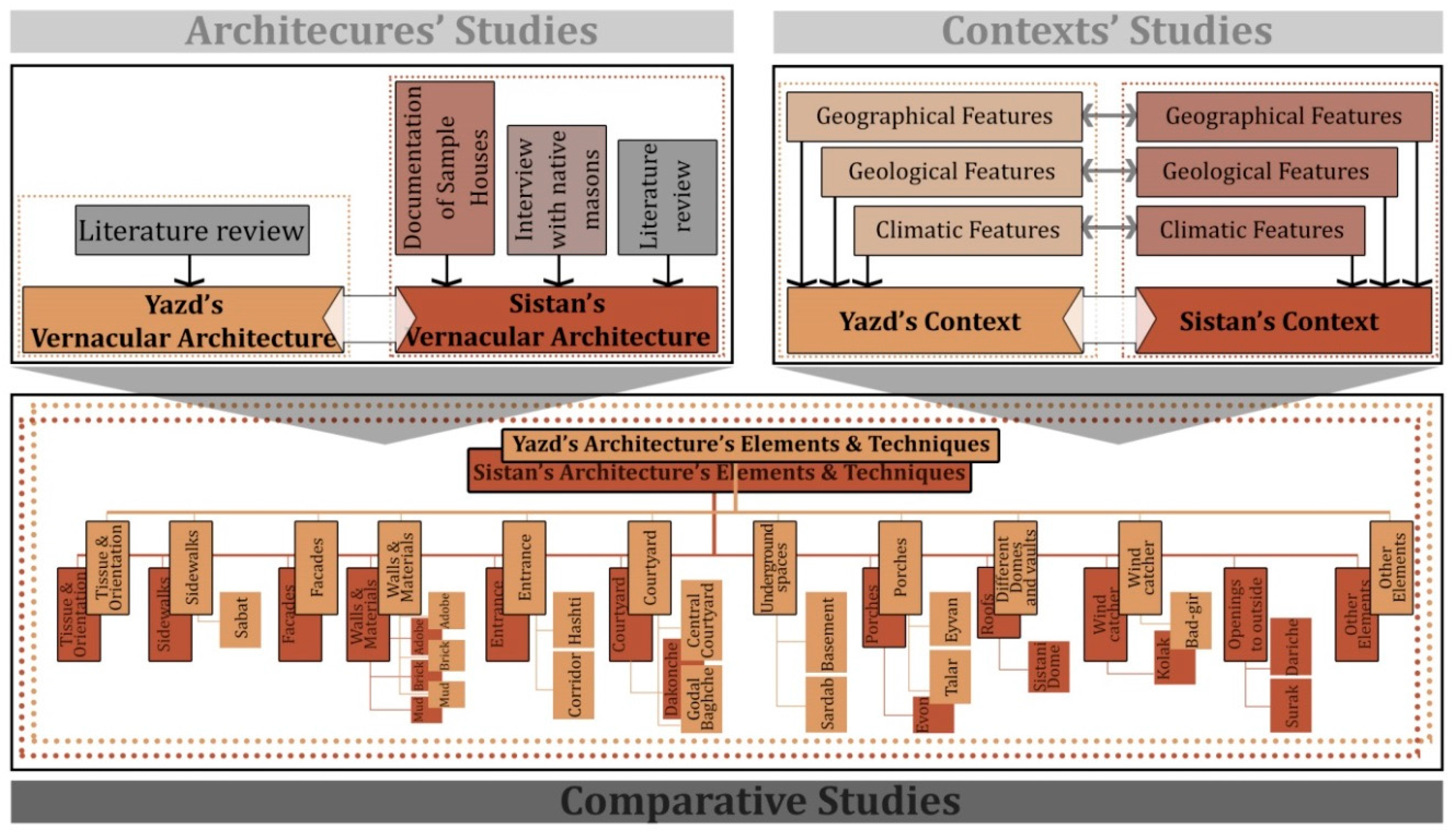
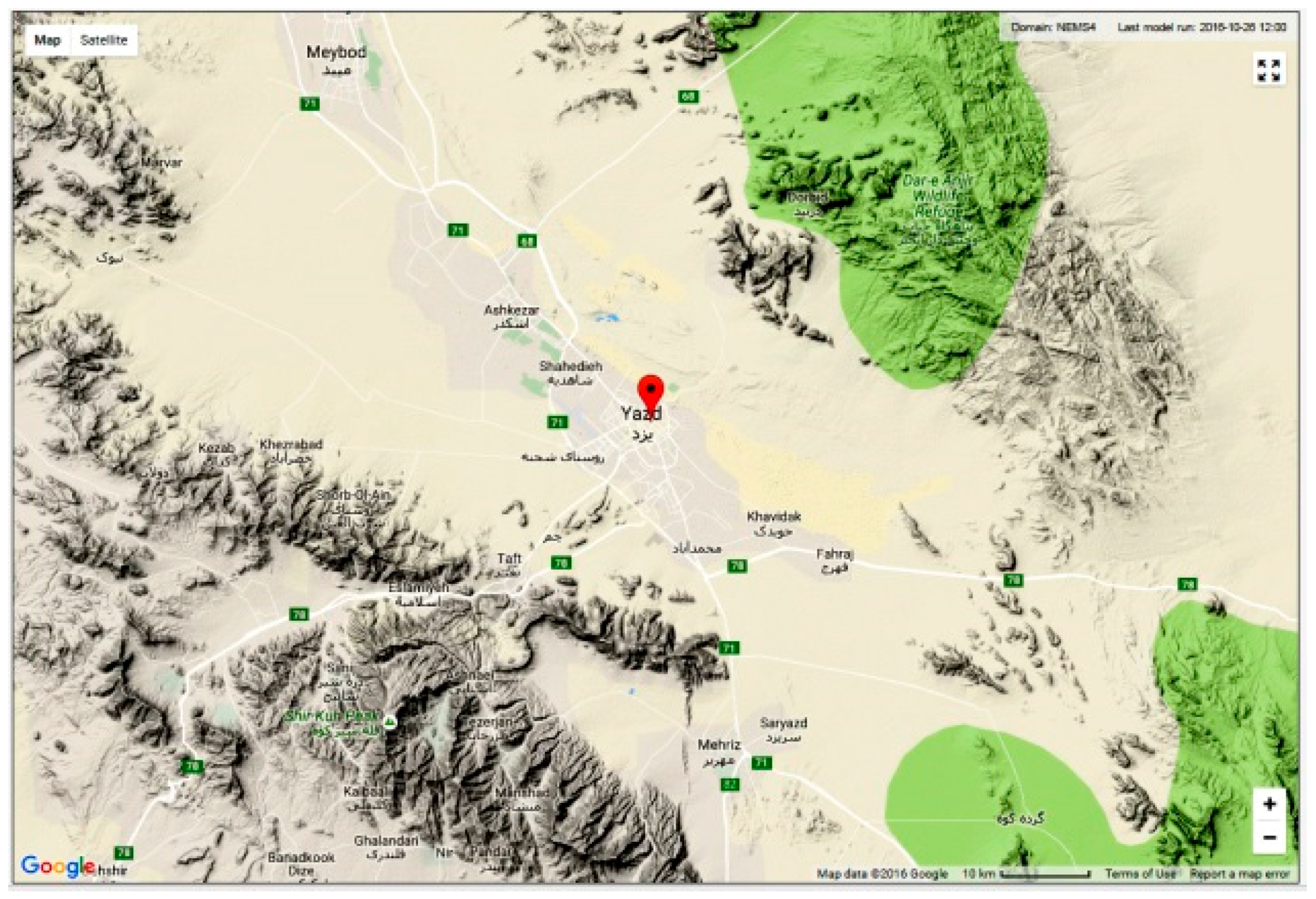
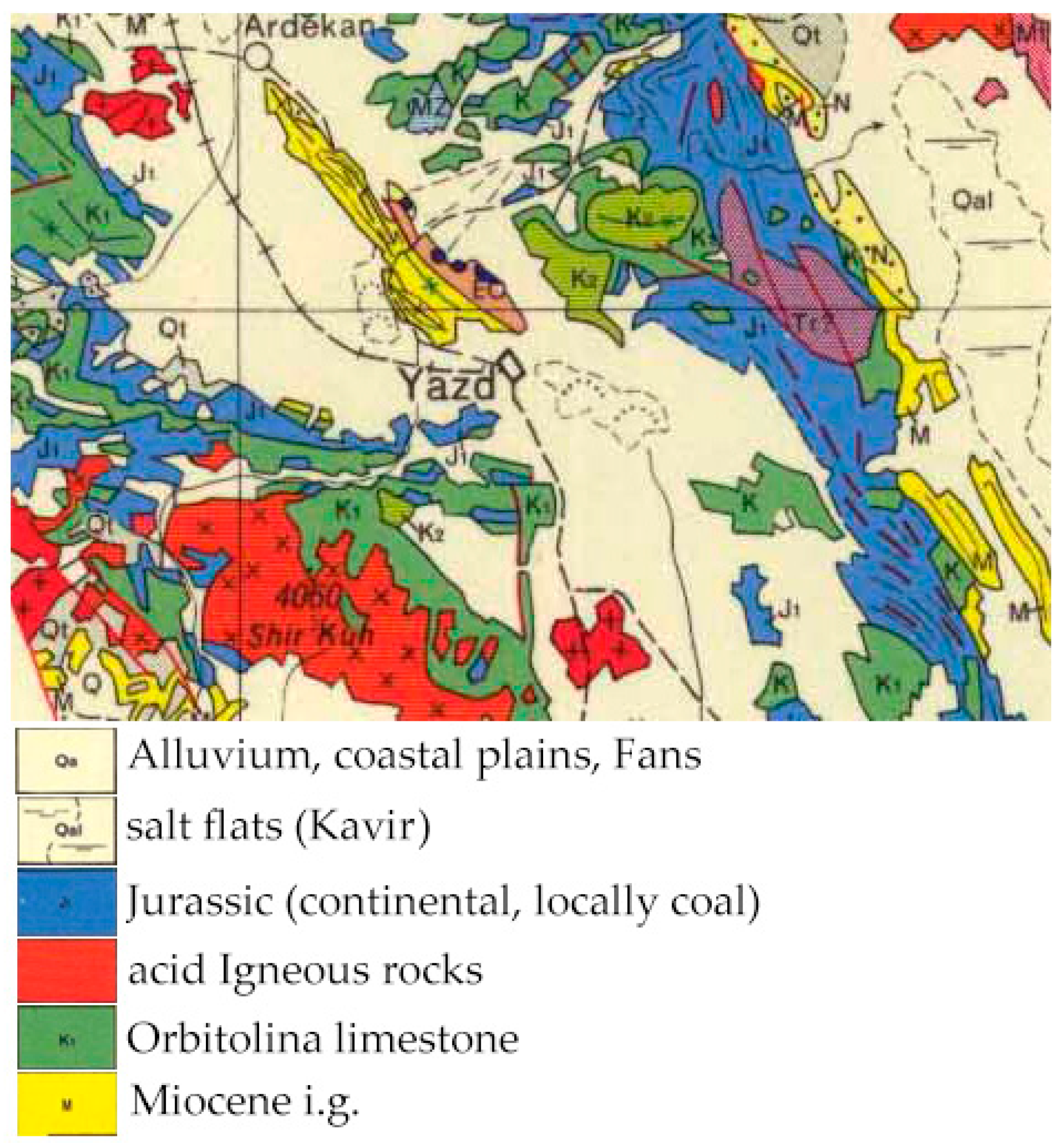

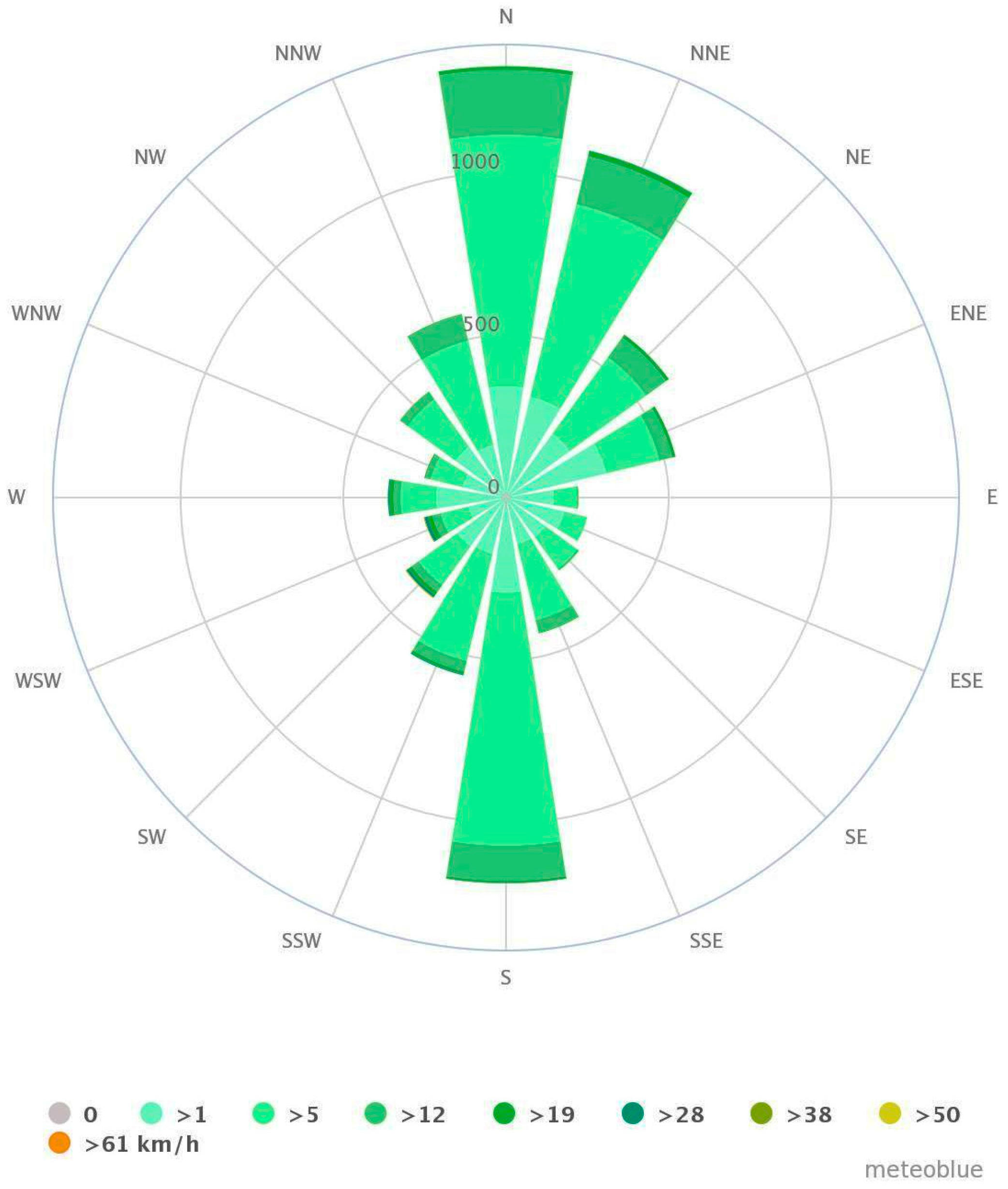
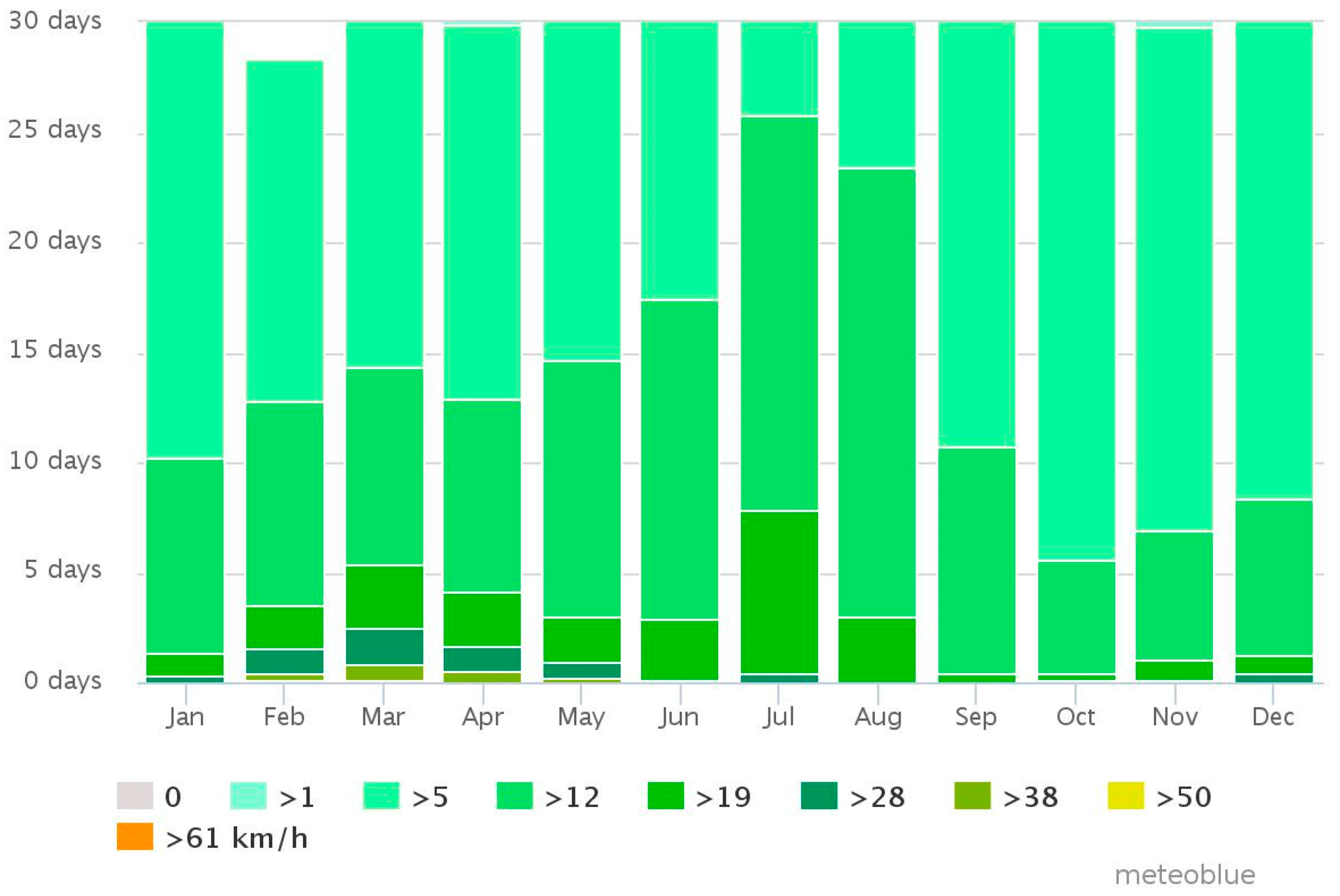


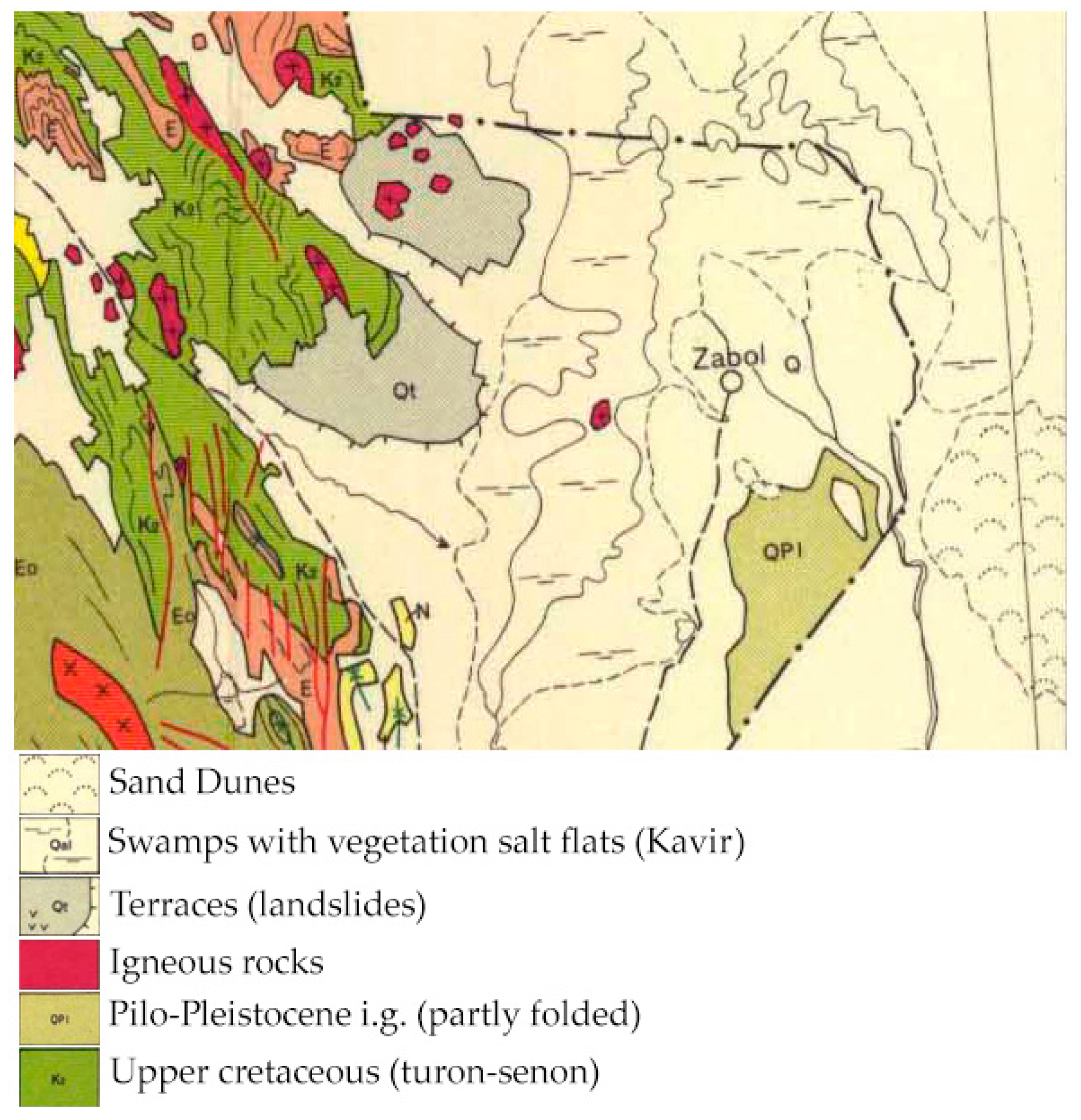
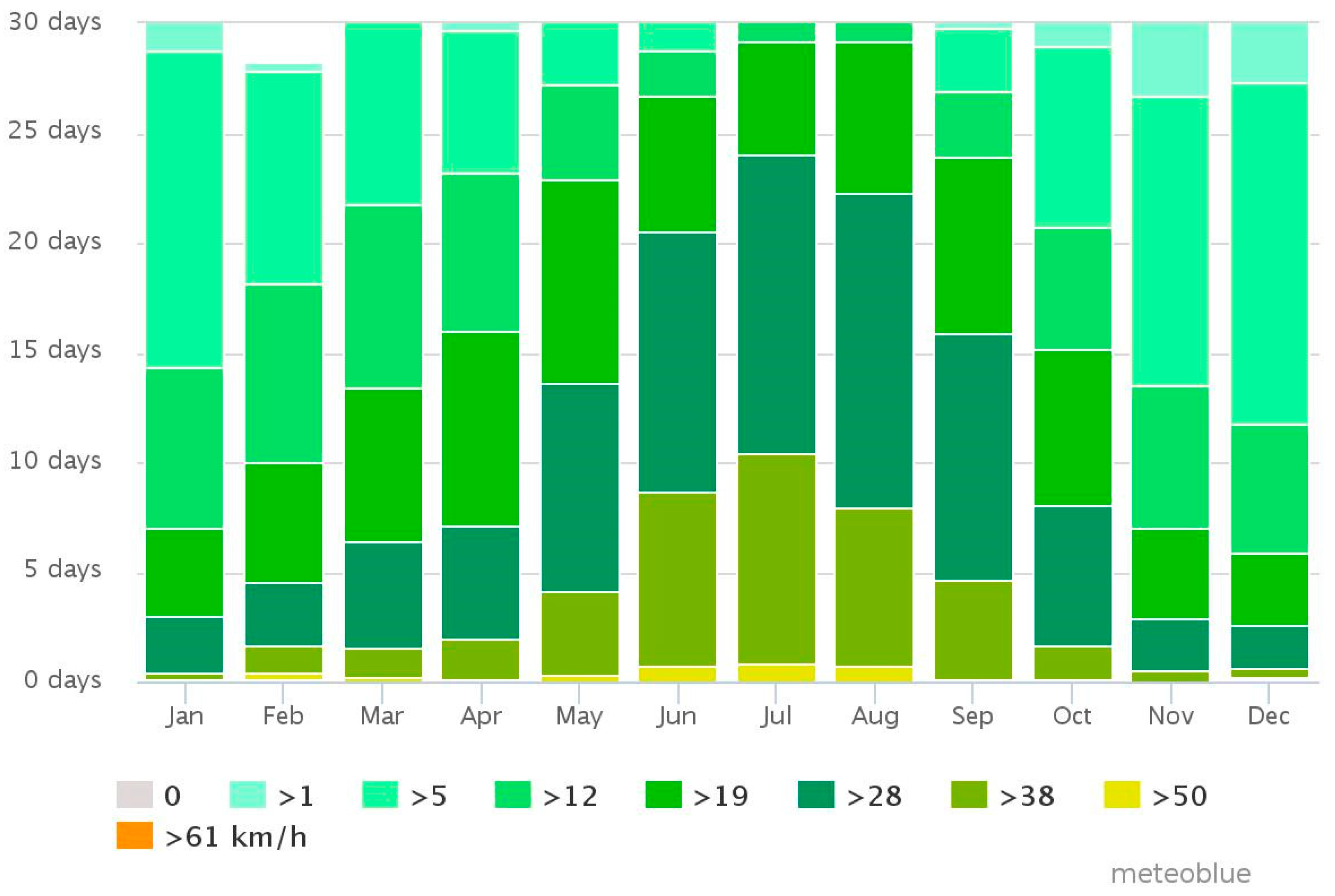

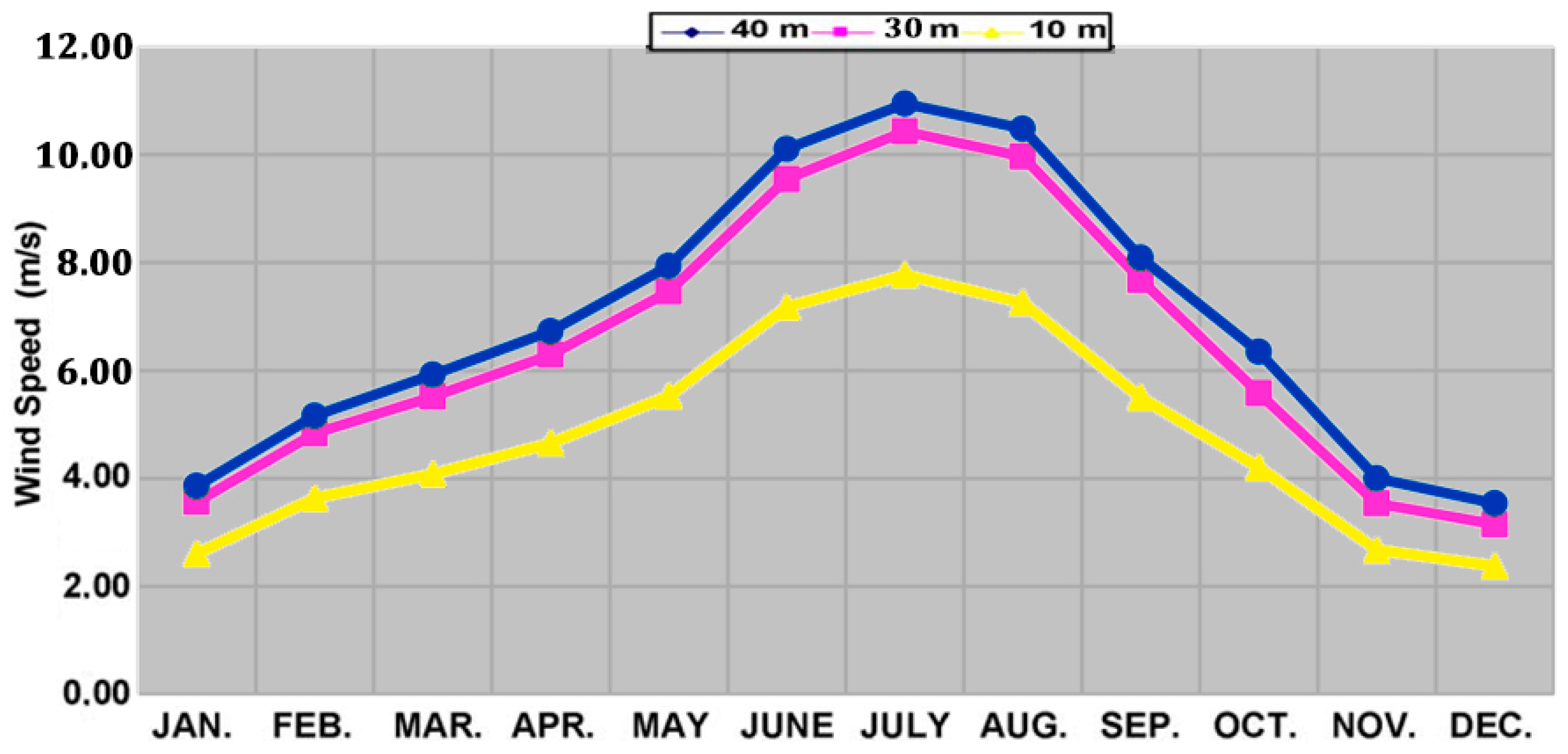
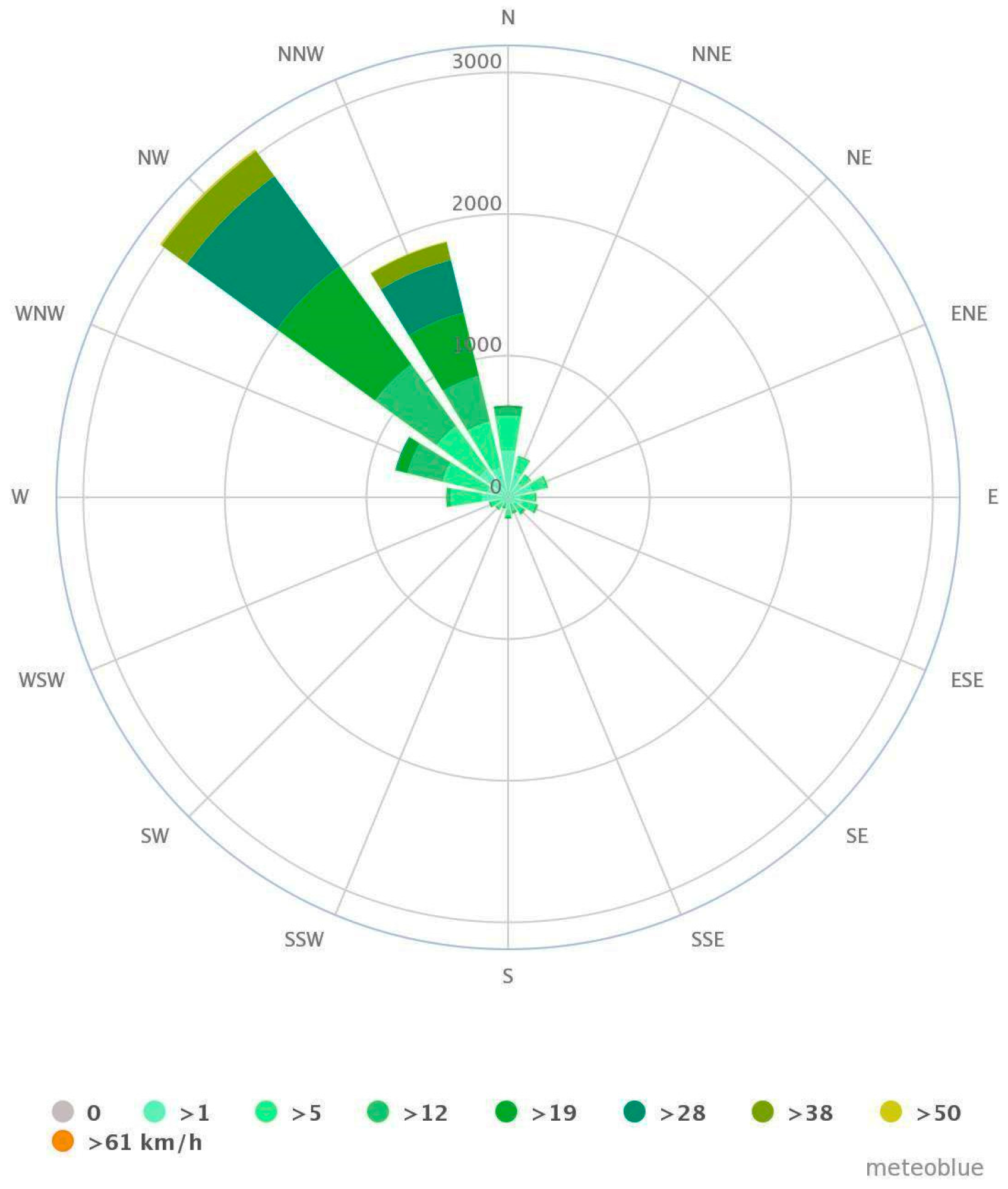

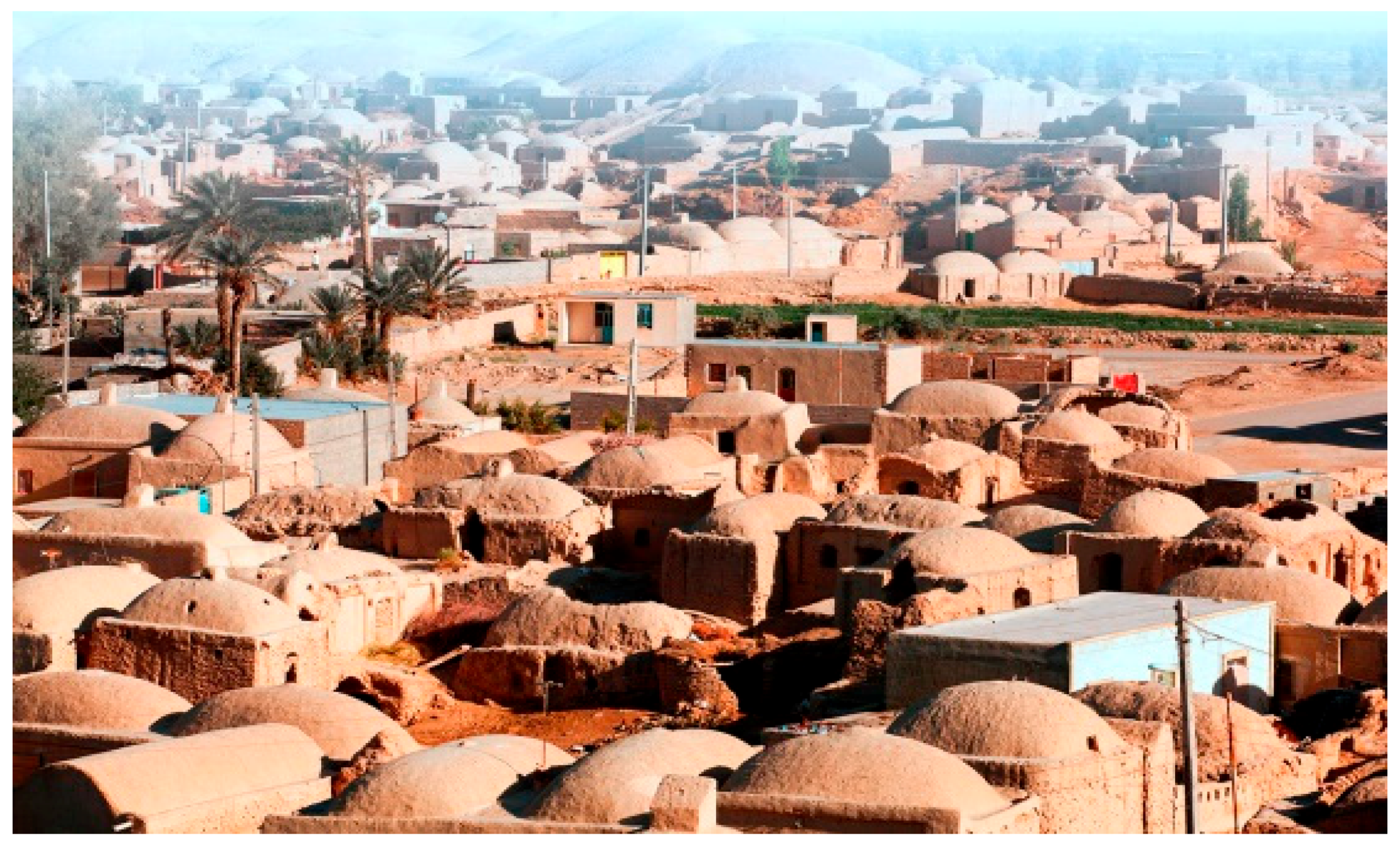


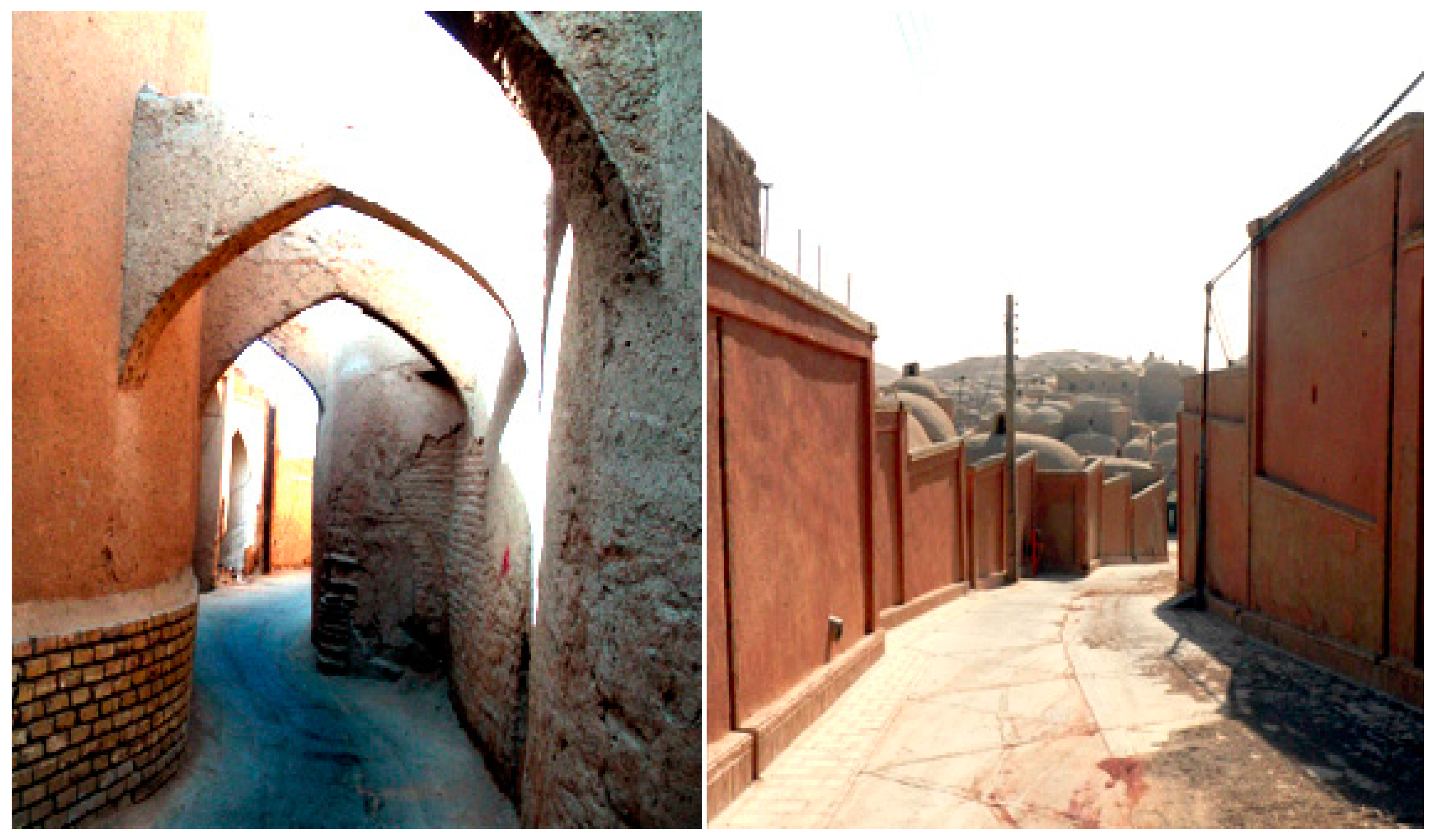
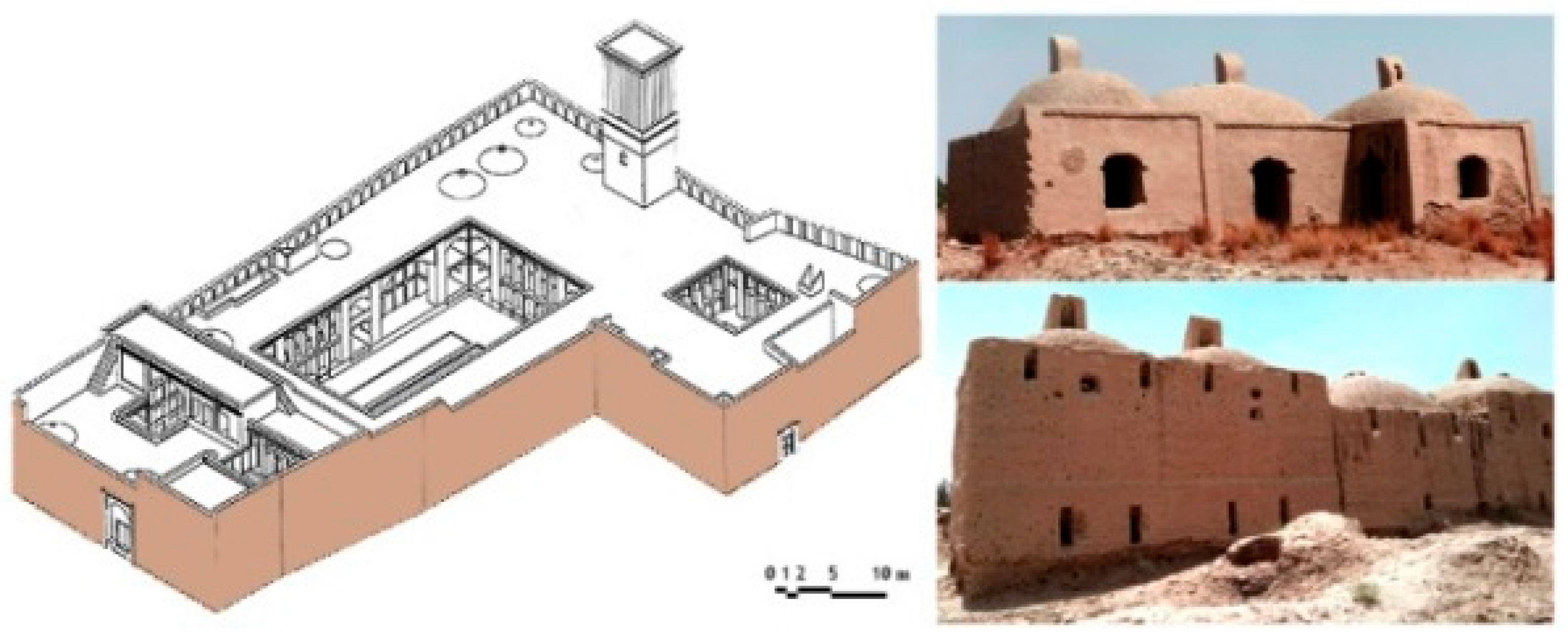
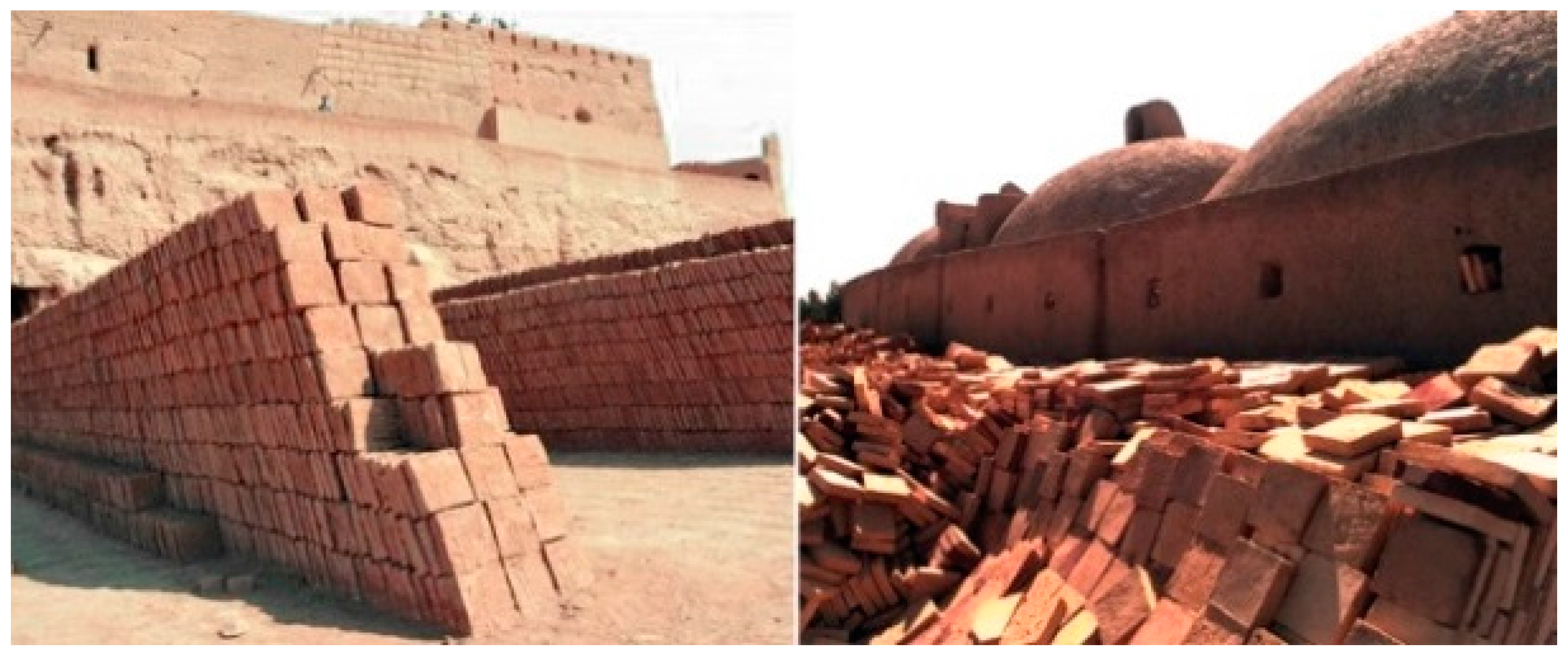
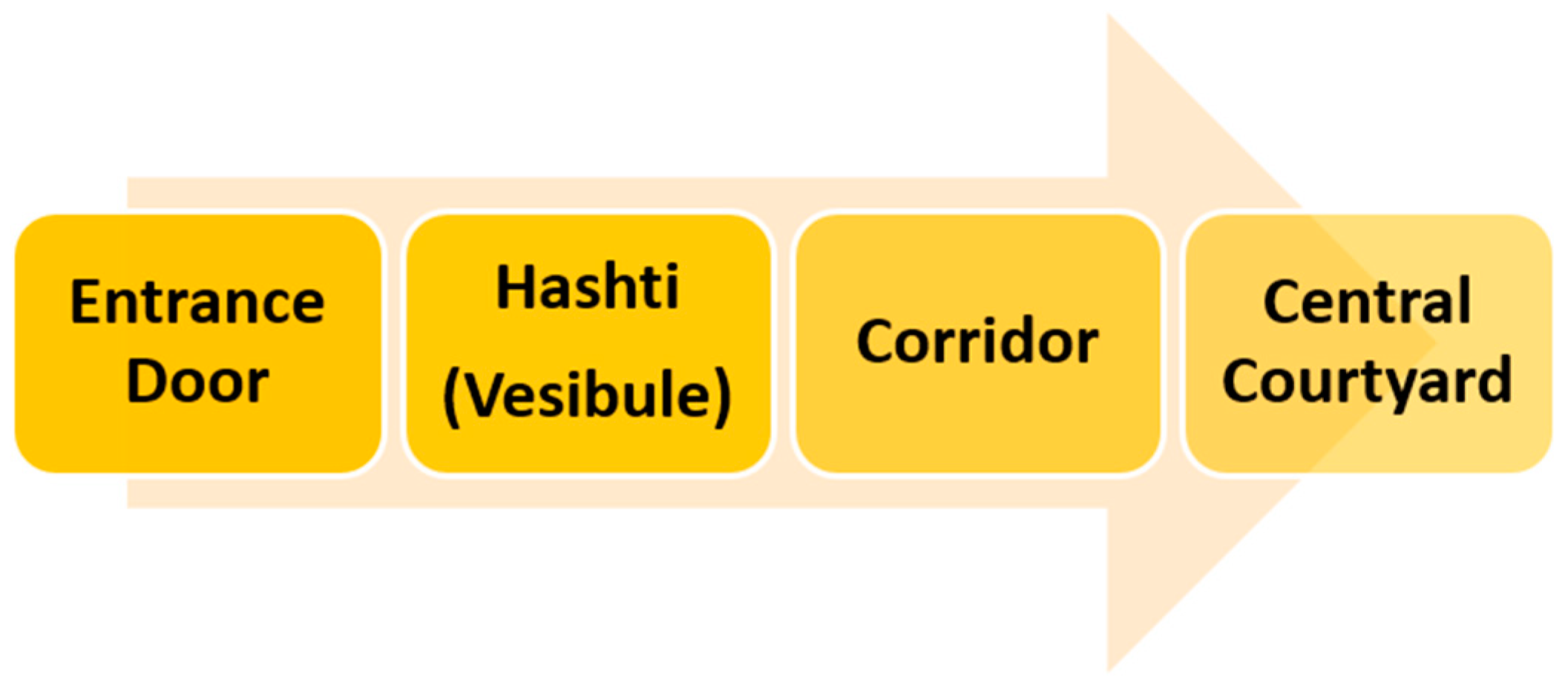
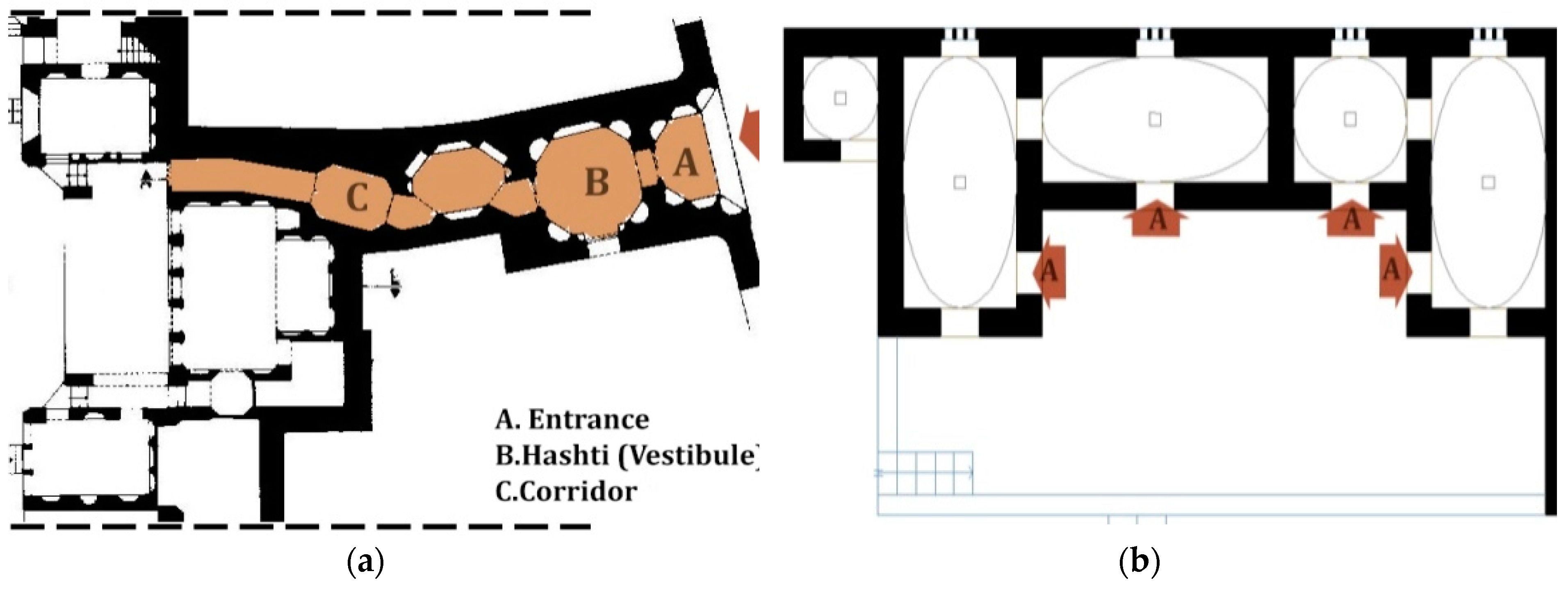
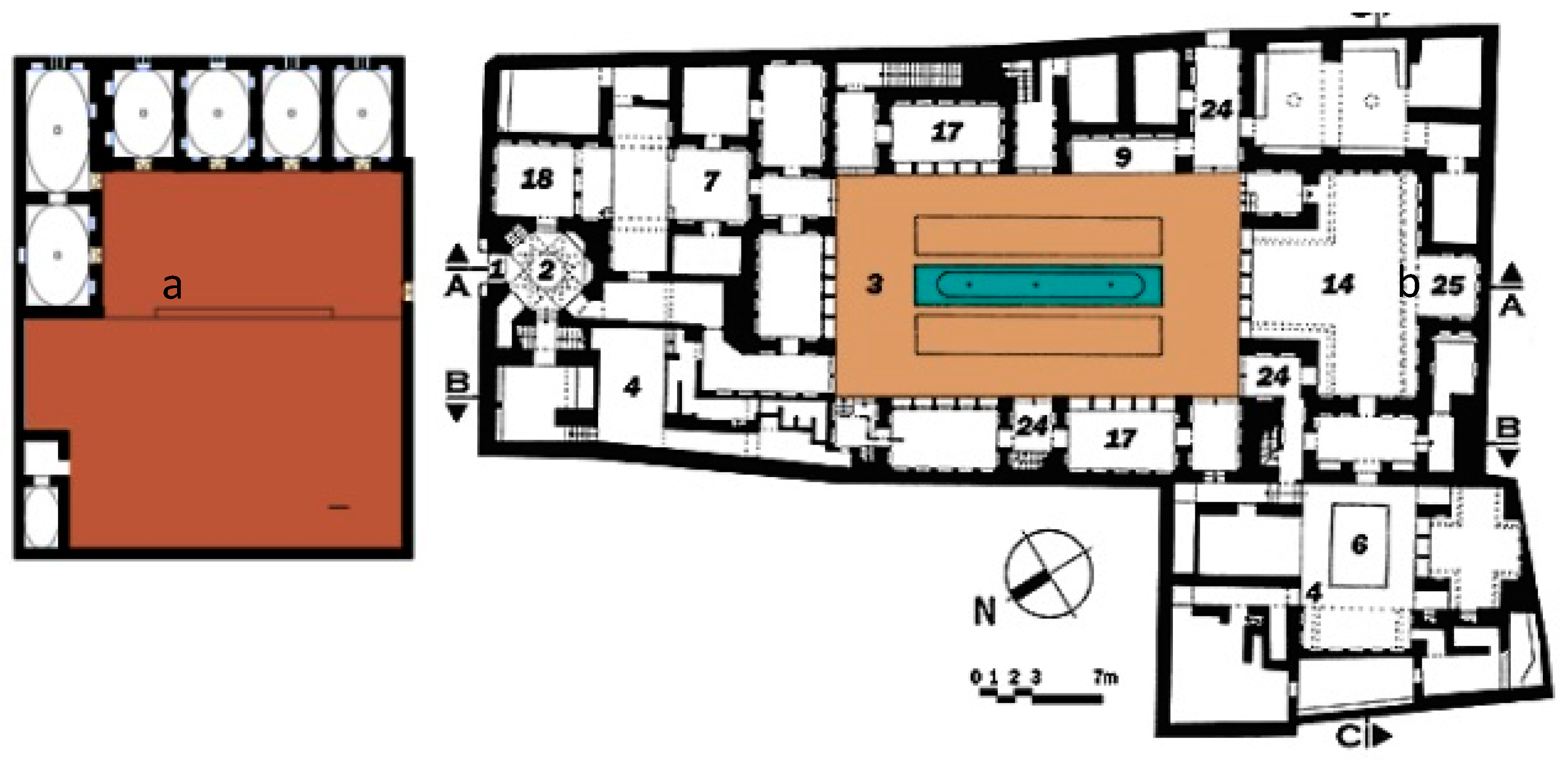
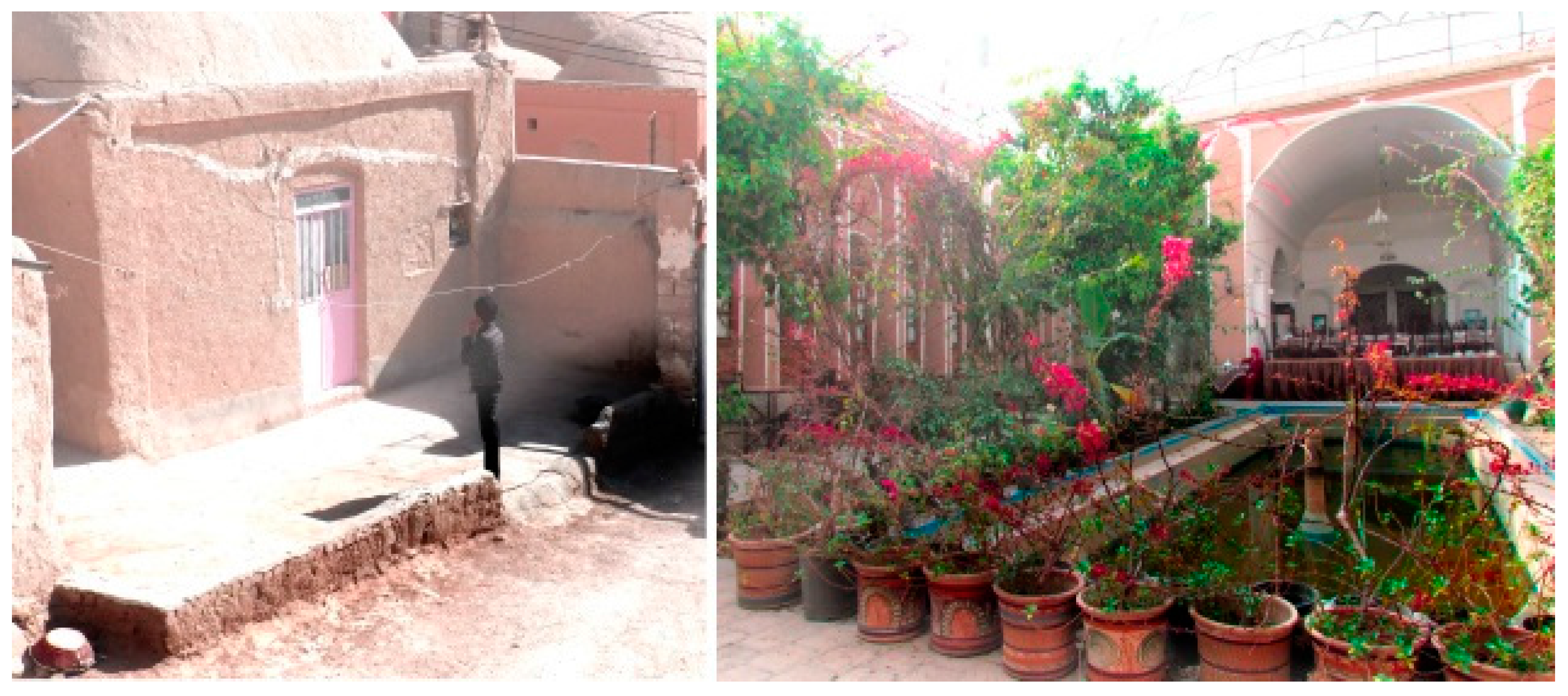

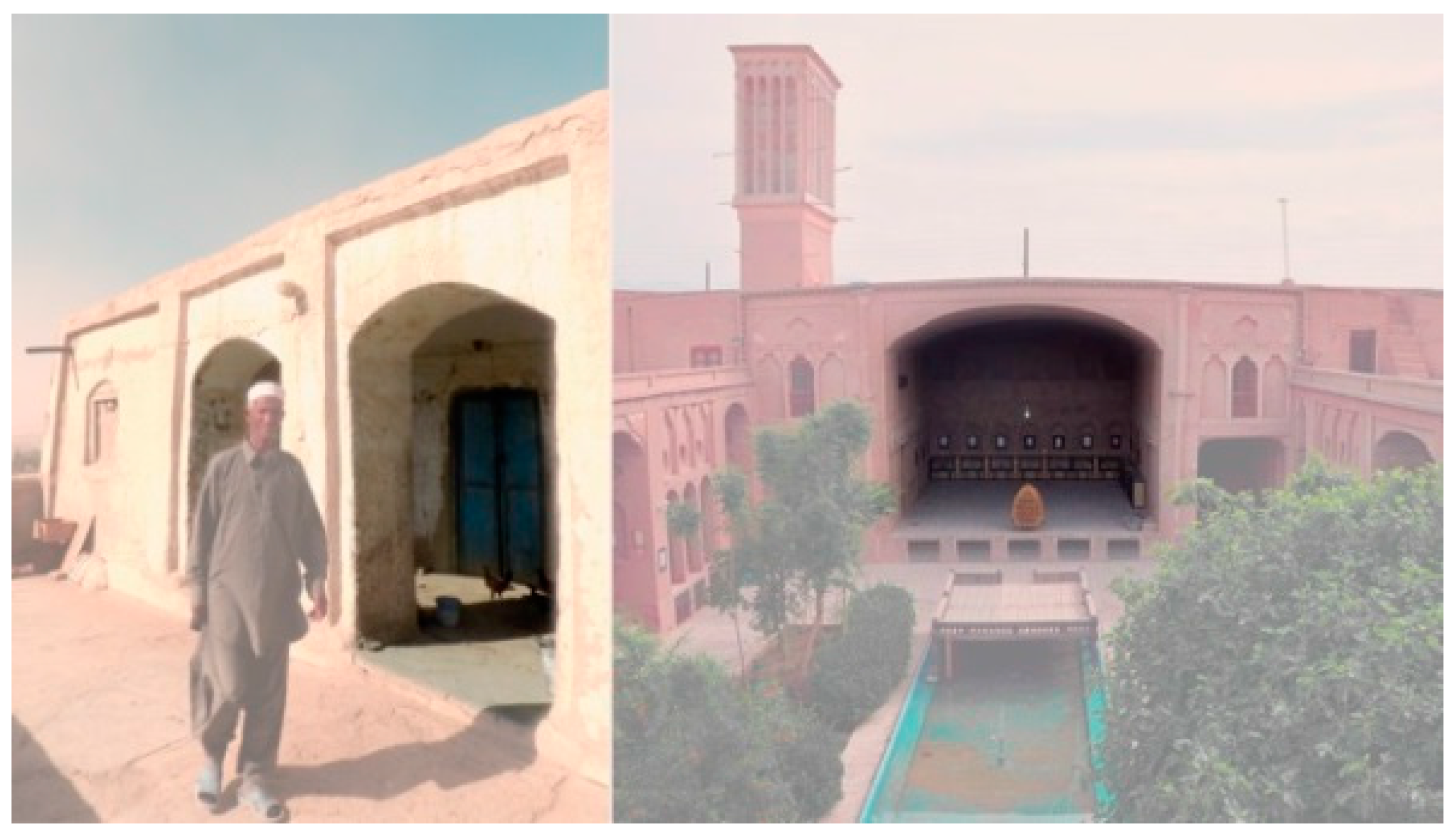
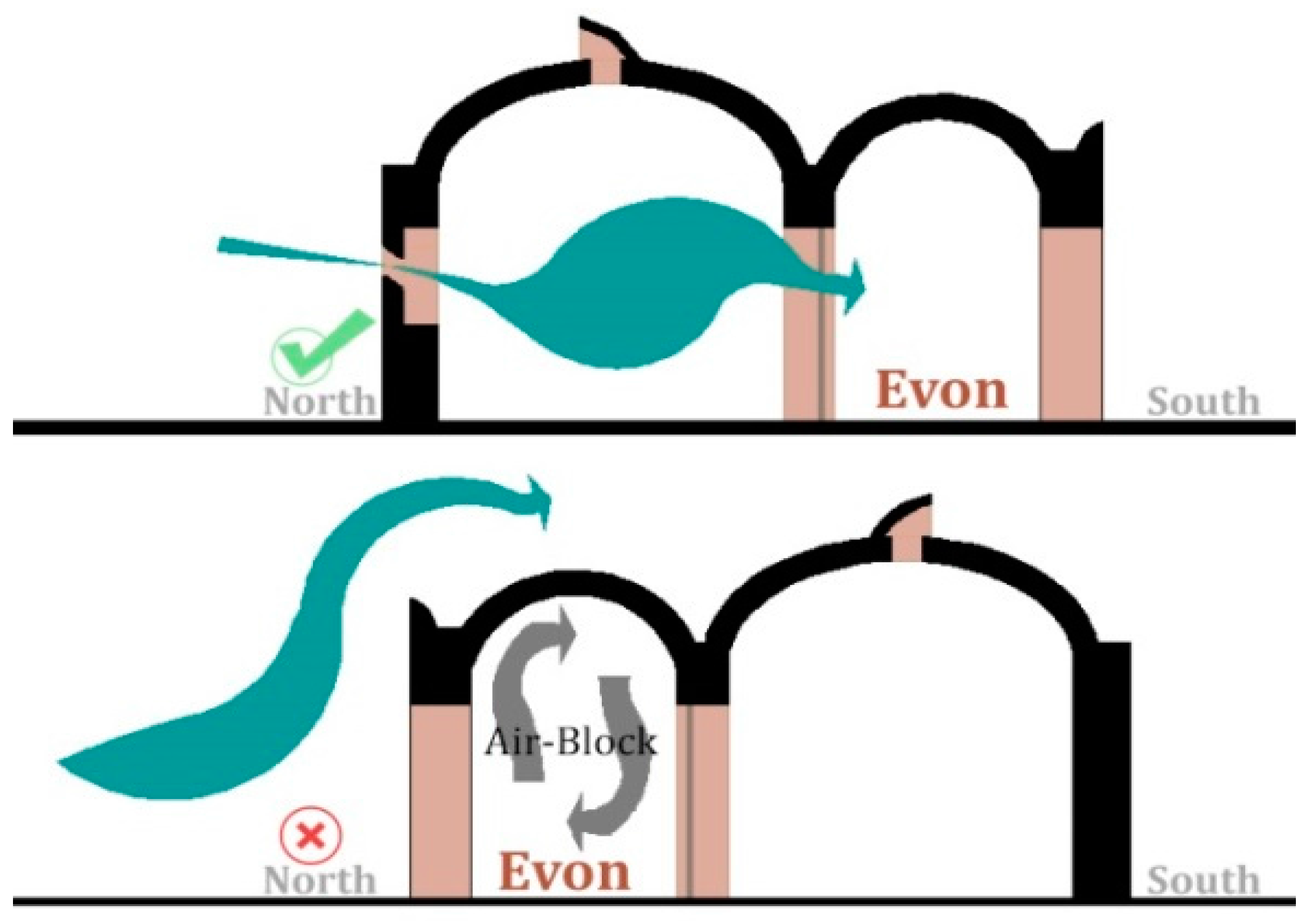
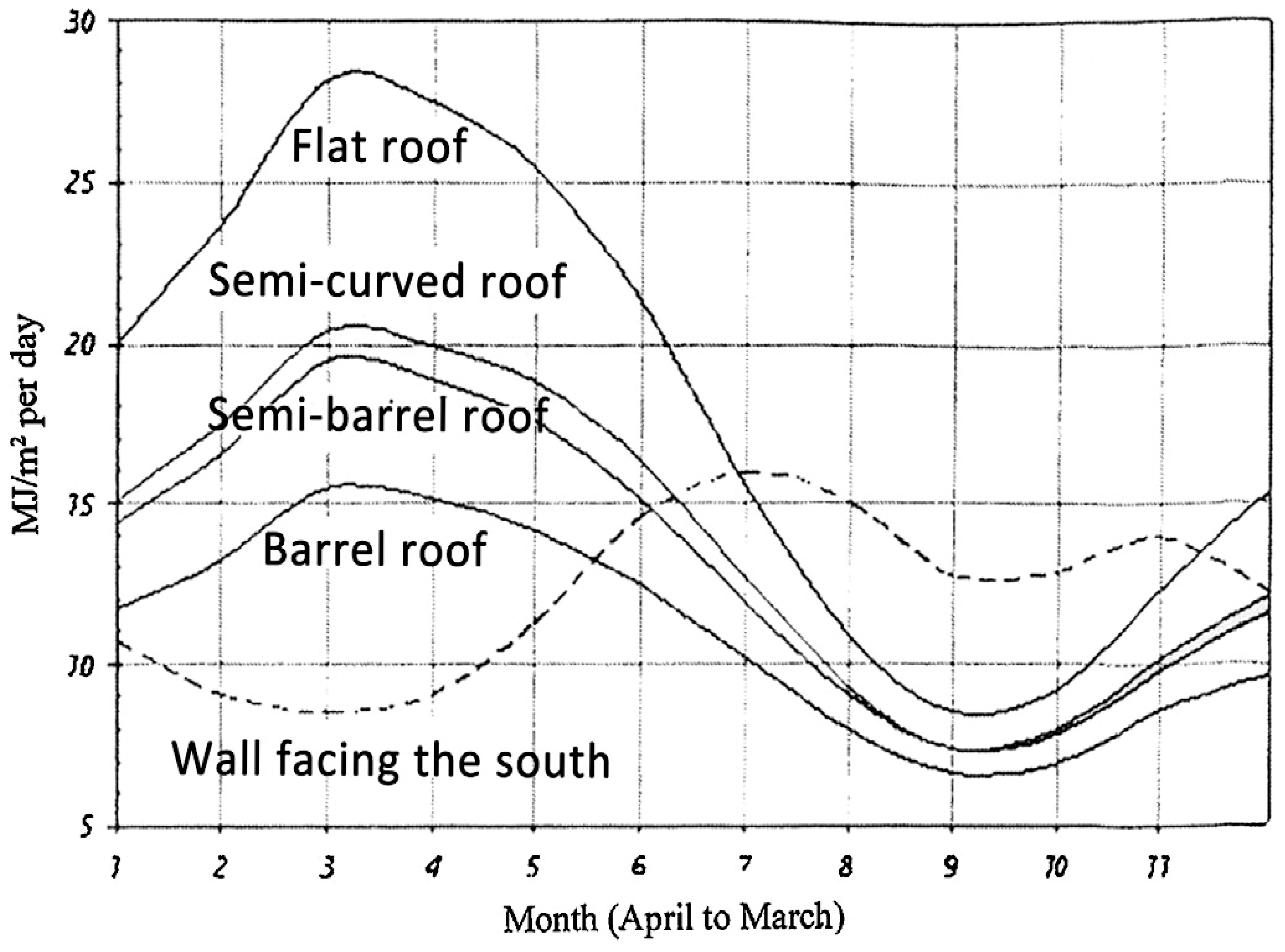
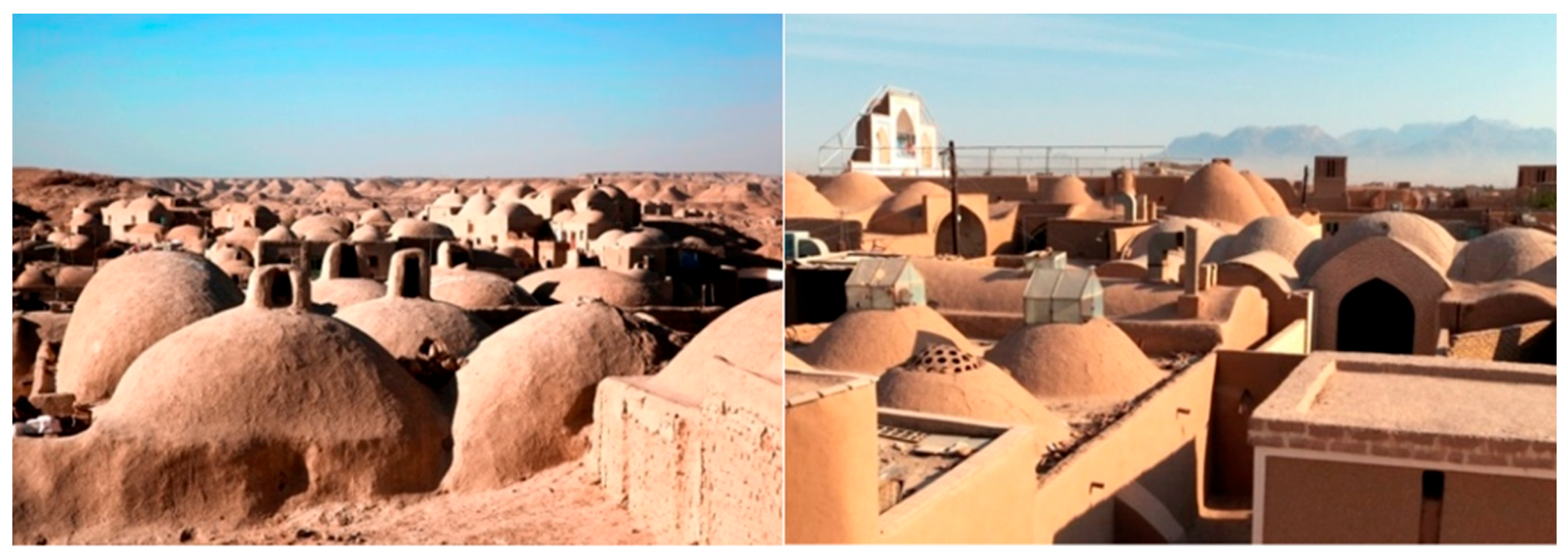

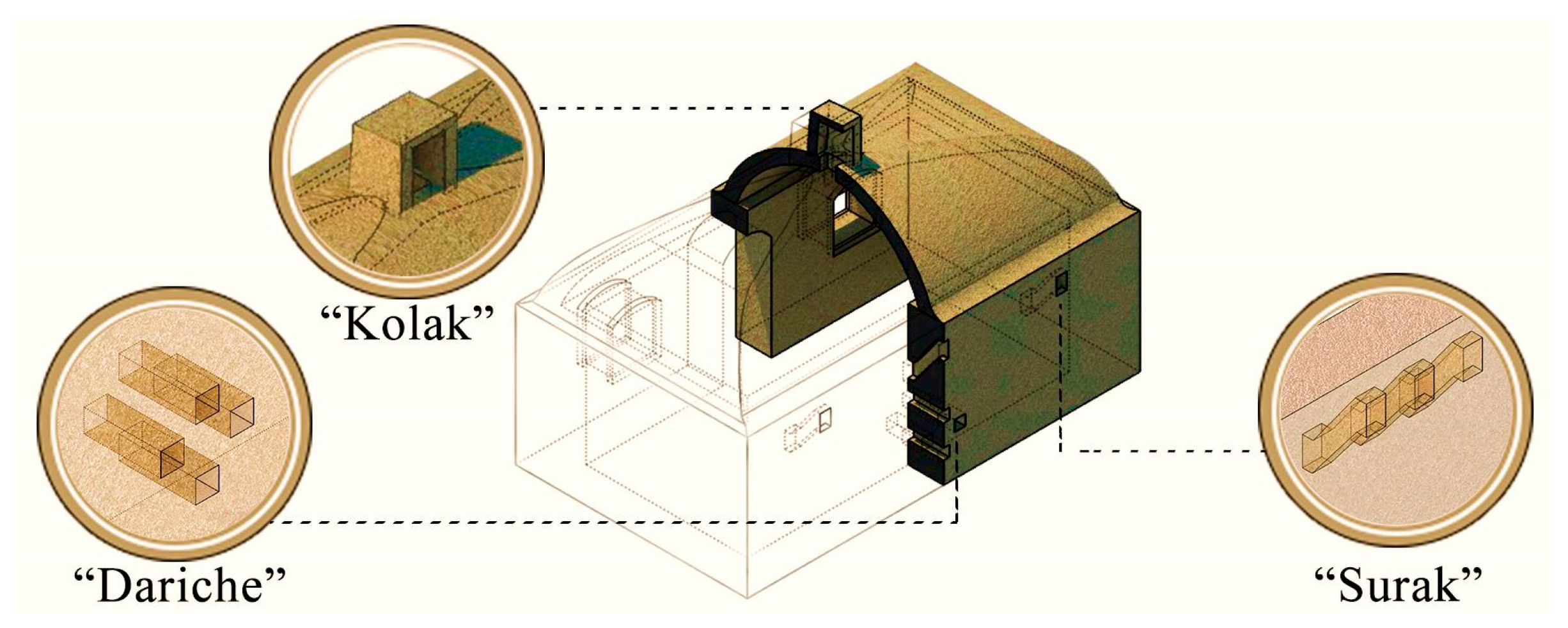
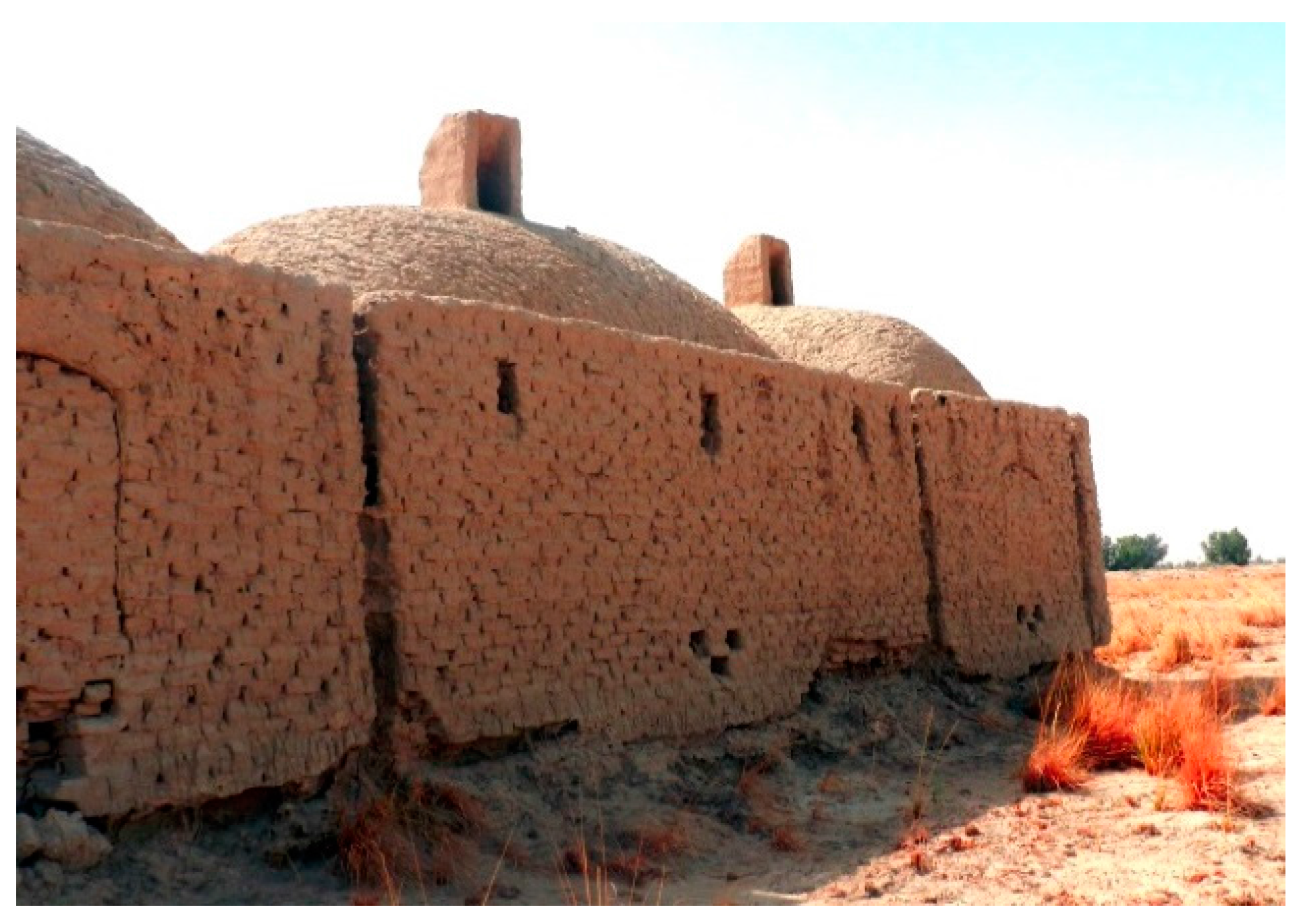


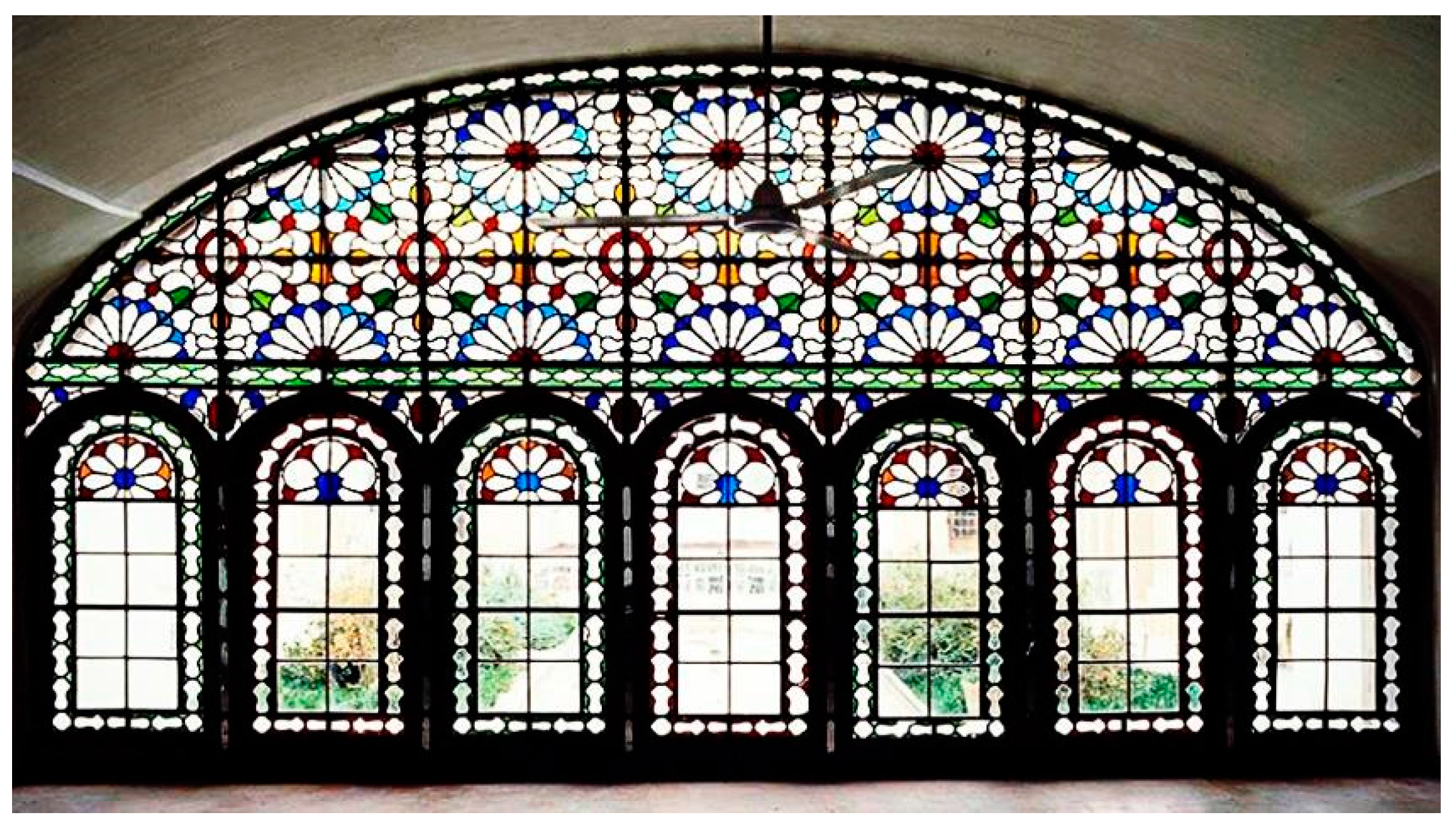
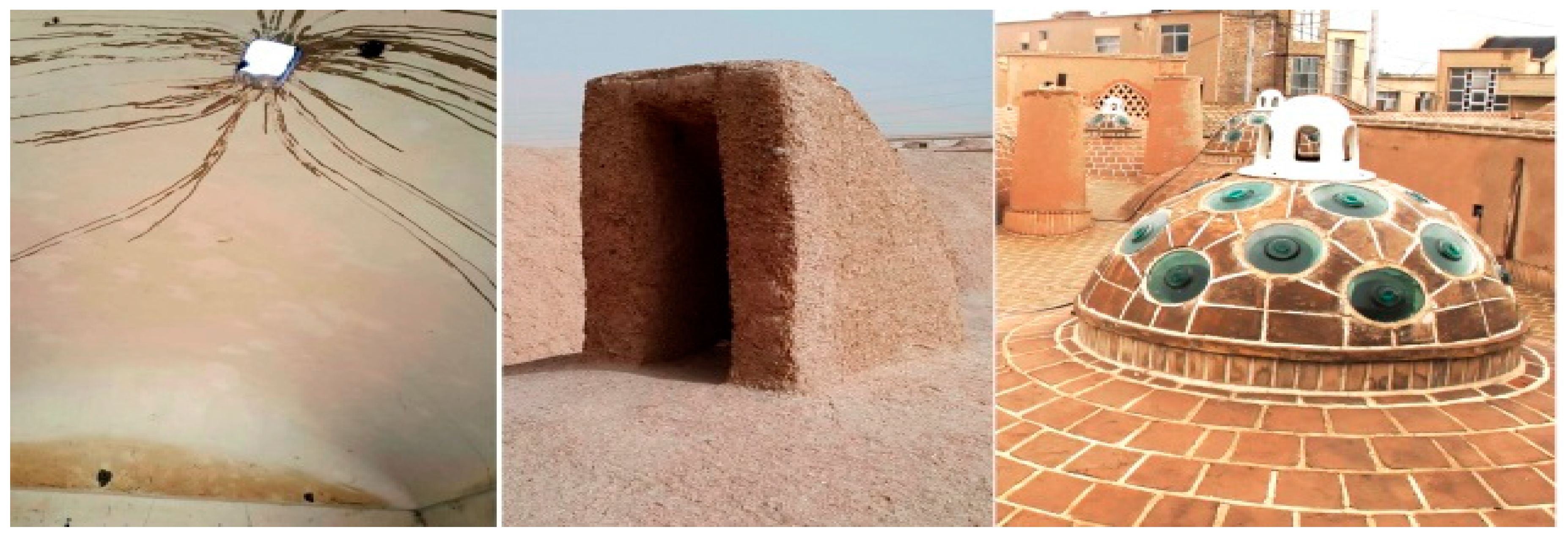
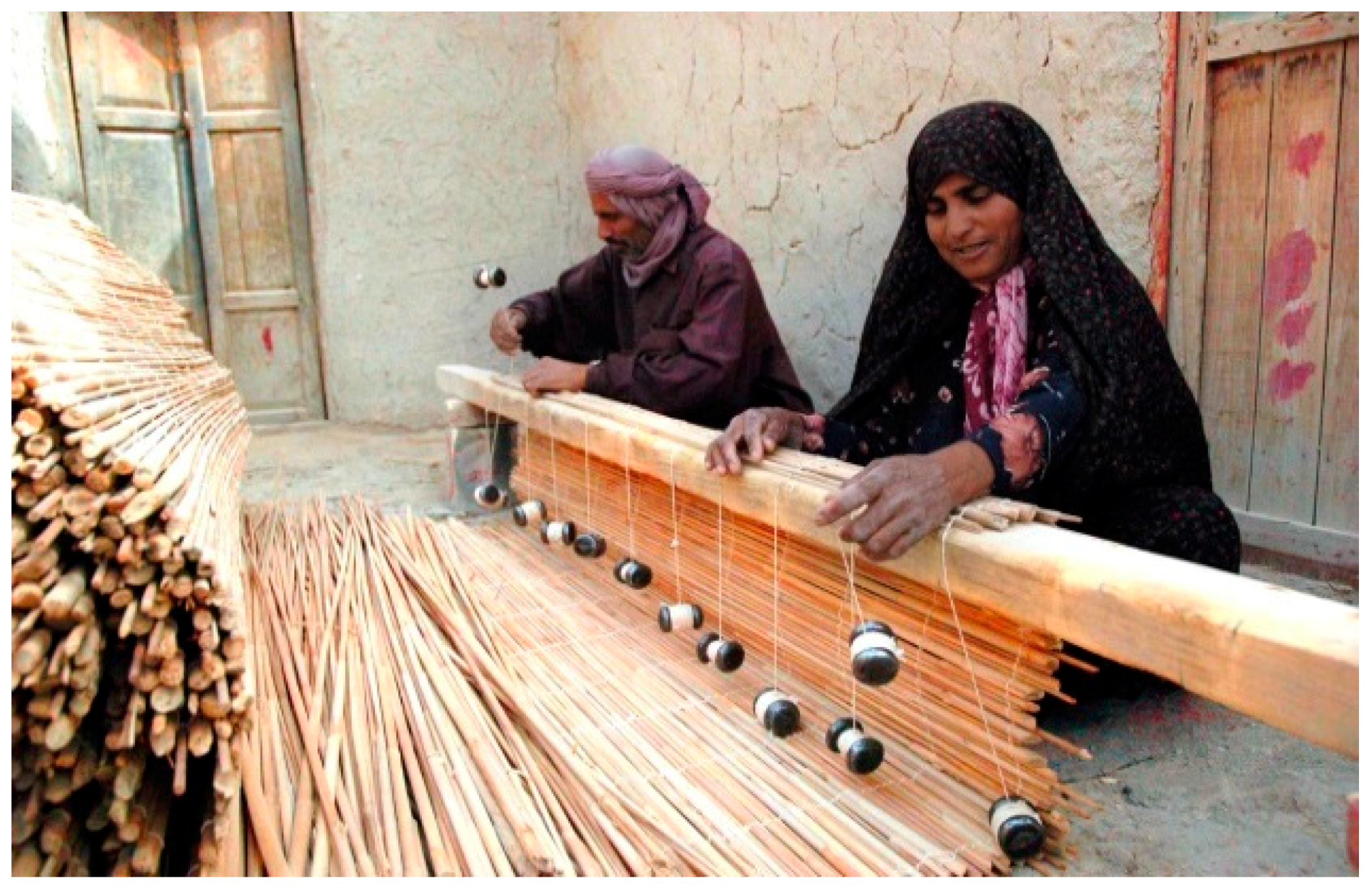
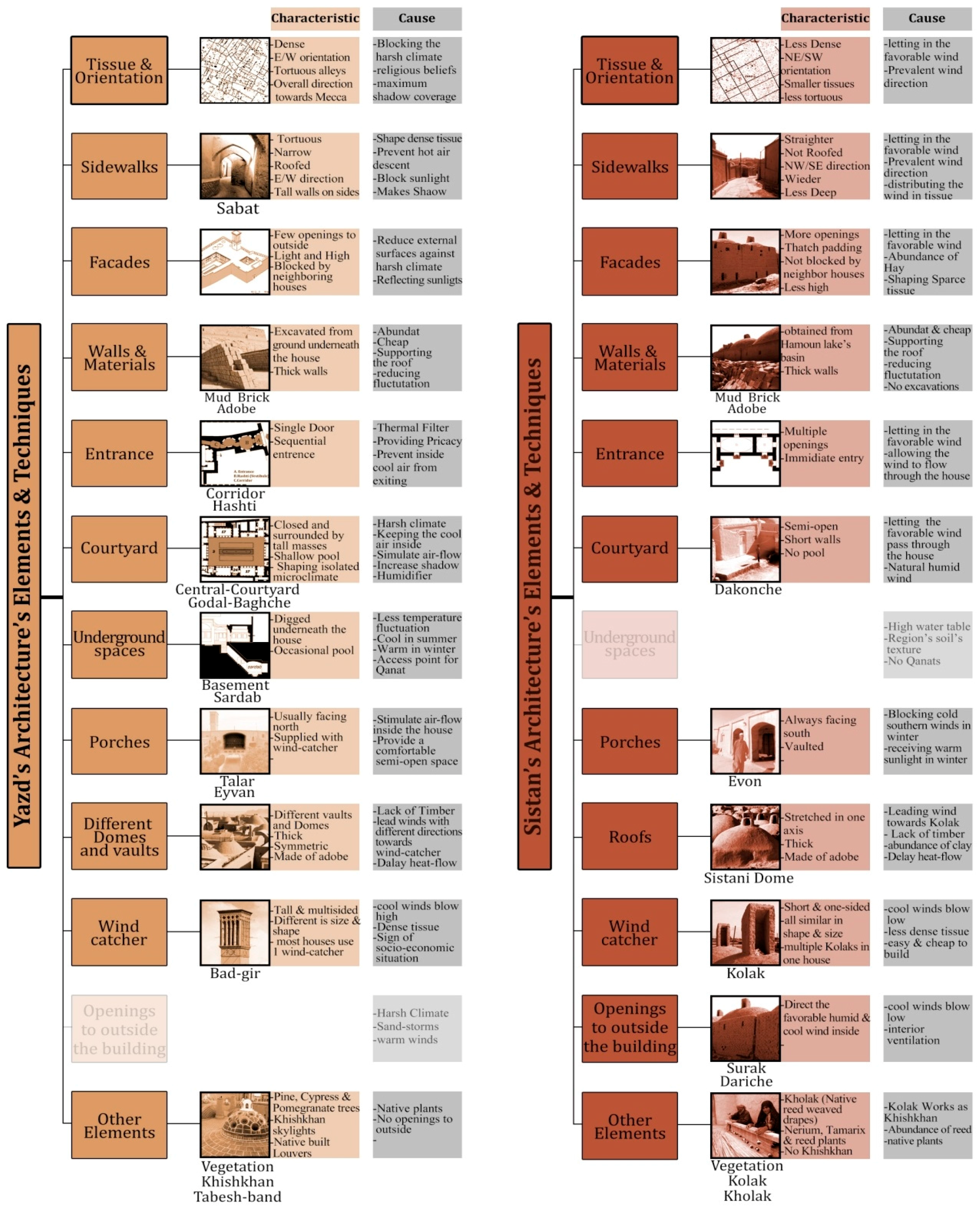
| District | Number of Villages | Percentage | Number of Sample Houses |
|---|---|---|---|
| Zabol | 77 | 9.5% | 3 |
| Zahak | 148 | 19.7% | 6 |
| Hamoun | 160 | 19.8% | 7 |
| Hirmand | 305 | 27% | 12 |
| Nimrouz | 118 | 14% | 4 |
| All the region | 808 | 100% | 32 |
| Height (cm) | Count | Percentage |
|---|---|---|
| 0–120 | 141 | 21.3% |
| 120–300 | 255 | 38.5% |
| 300–500 | 157 | 23.7% |
| 500–1000 | 103 | 15.5% |
| Over 1000 | 7 | 1.1% |
| Total | 663 | 100% |
© 2017 by the authors. Licensee MDPI, Basel, Switzerland. This article is an open access article distributed under the terms and conditions of the Creative Commons Attribution (CC BY) license (http://creativecommons.org/licenses/by/4.0/).
Share and Cite
Sahebzadeh, S.; Heidari, A.; Kamelnia, H.; Baghbani, A. Sustainability Features of Iran’s Vernacular Architecture: A Comparative Study between the Architecture of Hot–Arid and Hot–Arid–Windy Regions. Sustainability 2017, 9, 749. https://doi.org/10.3390/su9050749
Sahebzadeh S, Heidari A, Kamelnia H, Baghbani A. Sustainability Features of Iran’s Vernacular Architecture: A Comparative Study between the Architecture of Hot–Arid and Hot–Arid–Windy Regions. Sustainability. 2017; 9(5):749. https://doi.org/10.3390/su9050749
Chicago/Turabian StyleSahebzadeh, Sadra, Abolfazl Heidari, Hamed Kamelnia, and Abolfazl Baghbani. 2017. "Sustainability Features of Iran’s Vernacular Architecture: A Comparative Study between the Architecture of Hot–Arid and Hot–Arid–Windy Regions" Sustainability 9, no. 5: 749. https://doi.org/10.3390/su9050749






